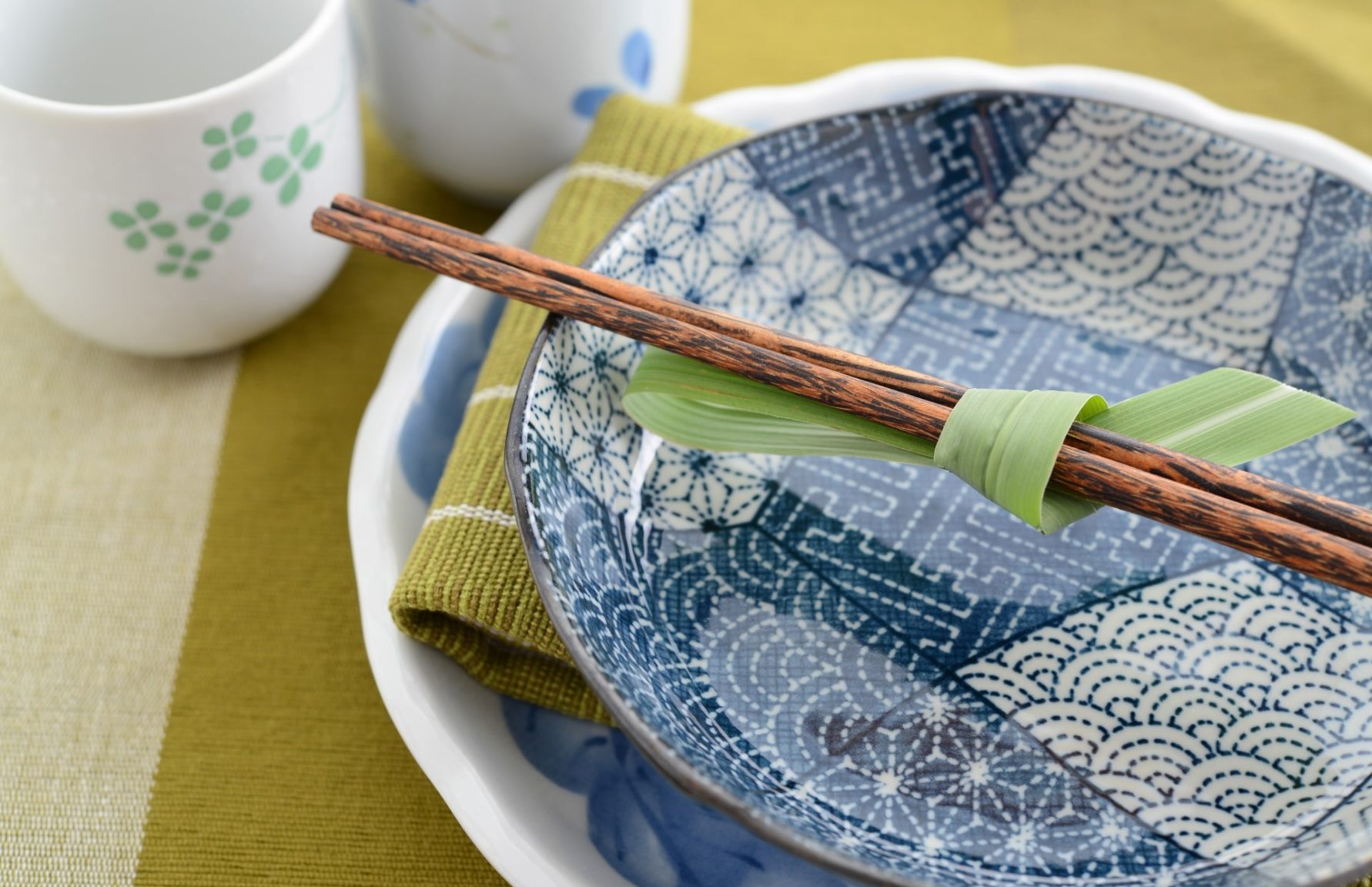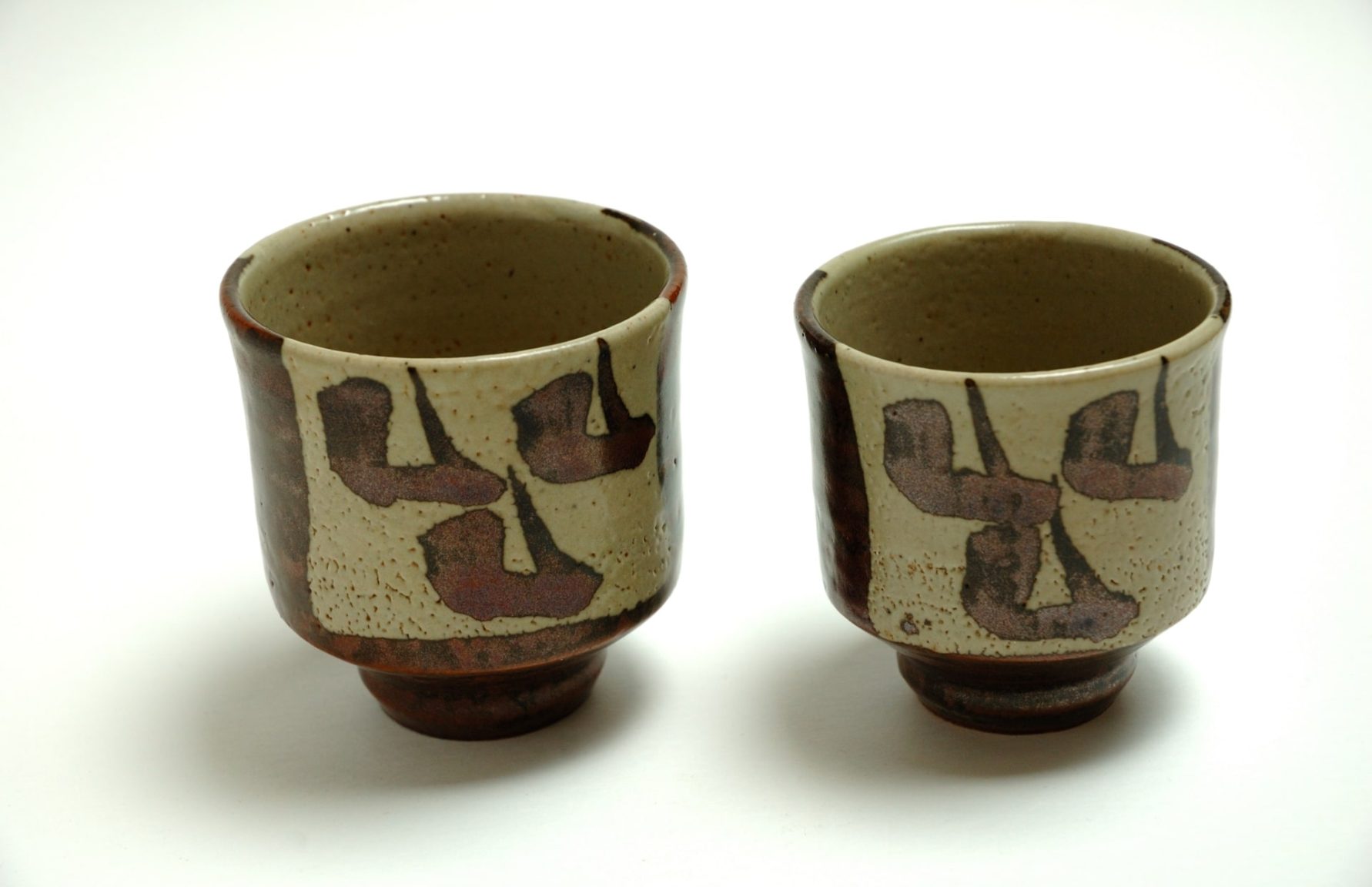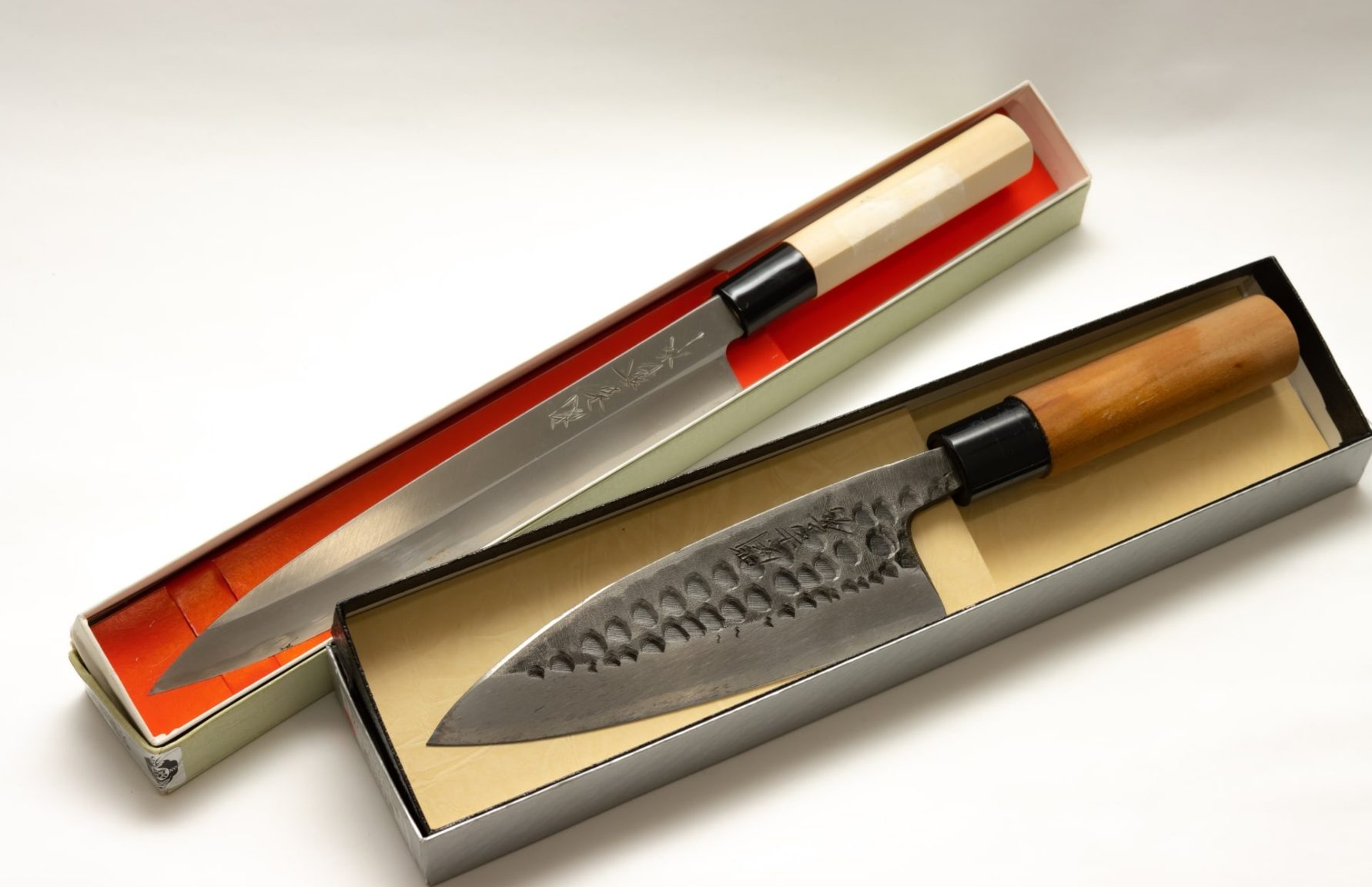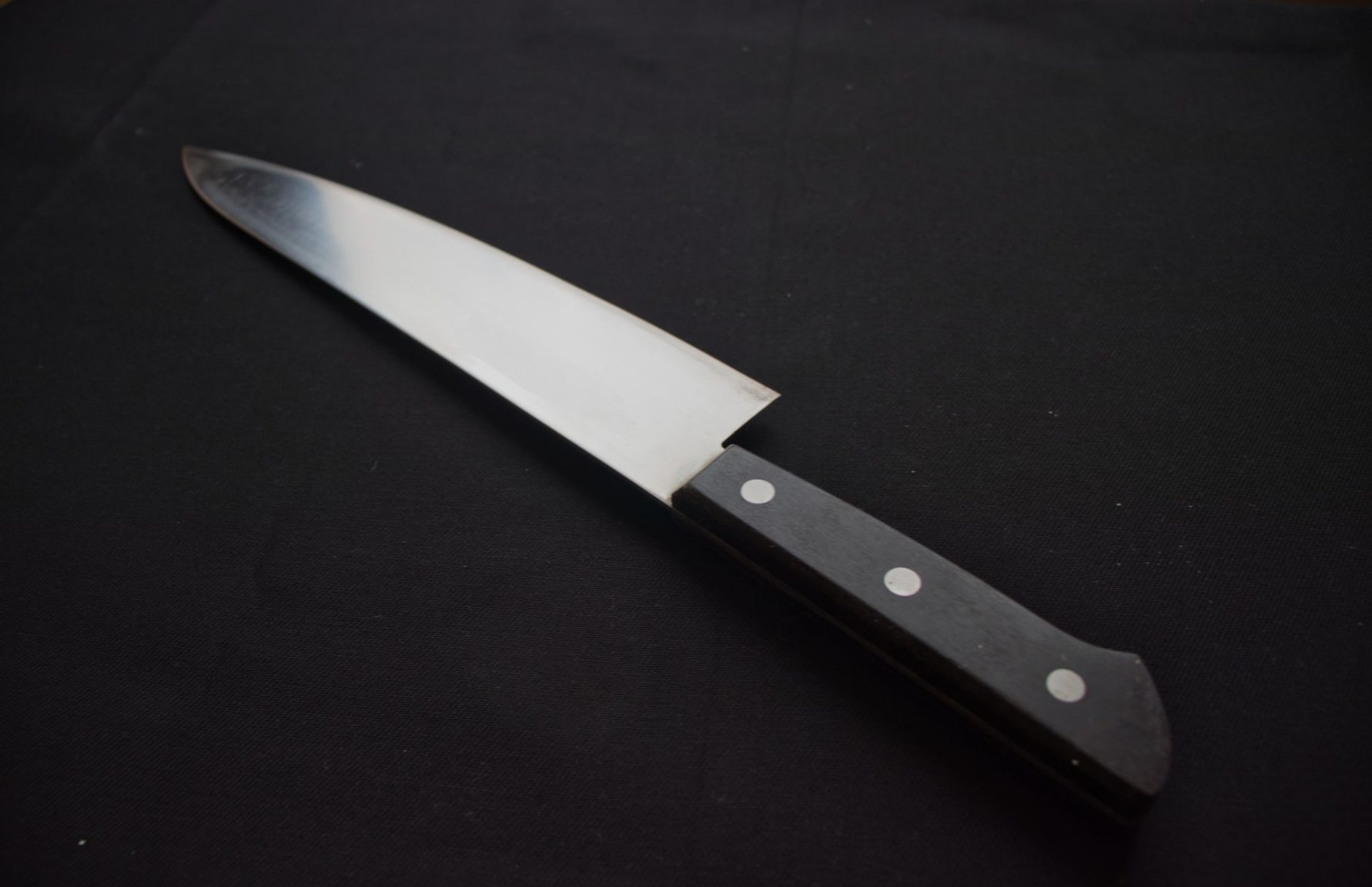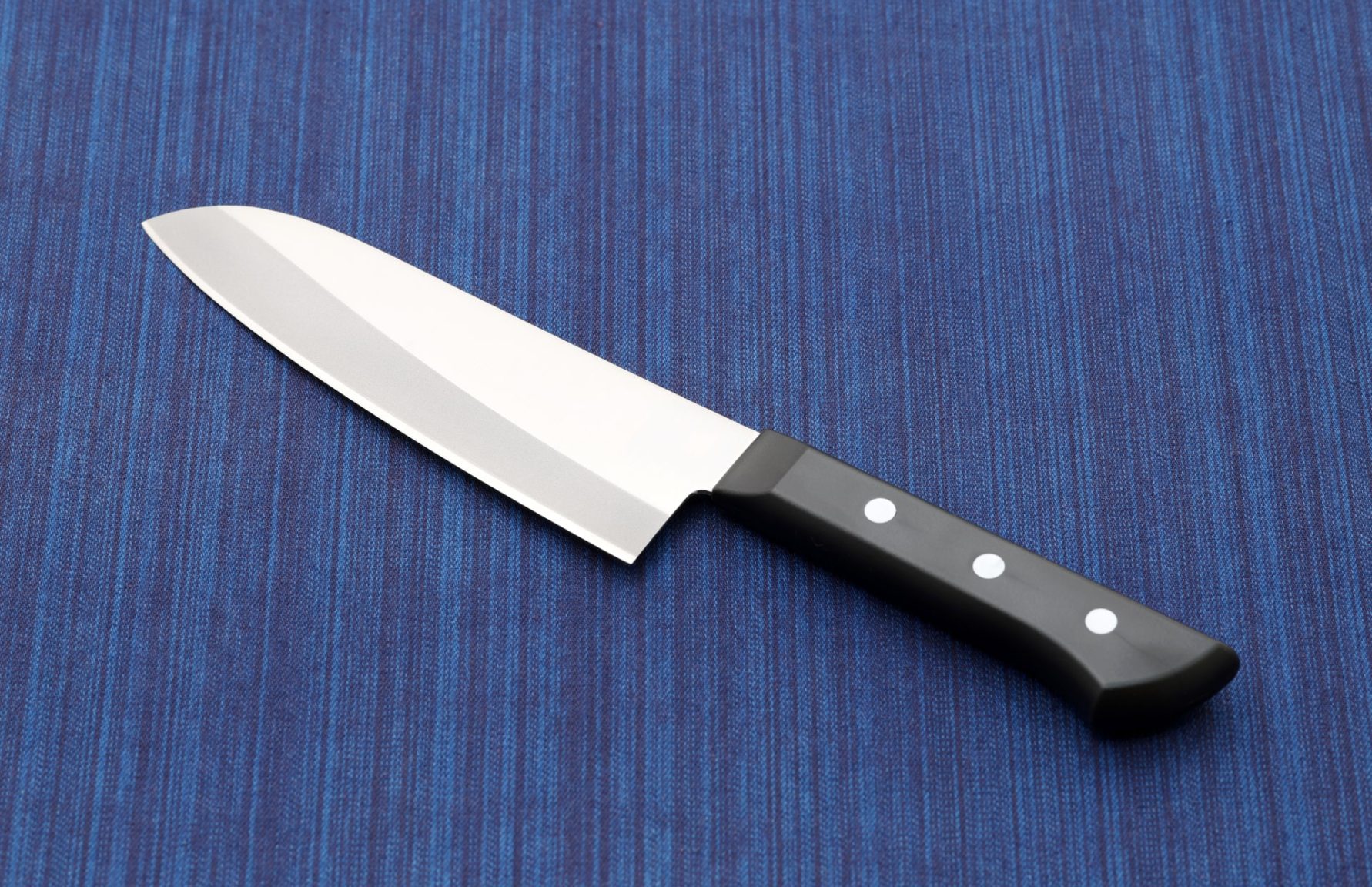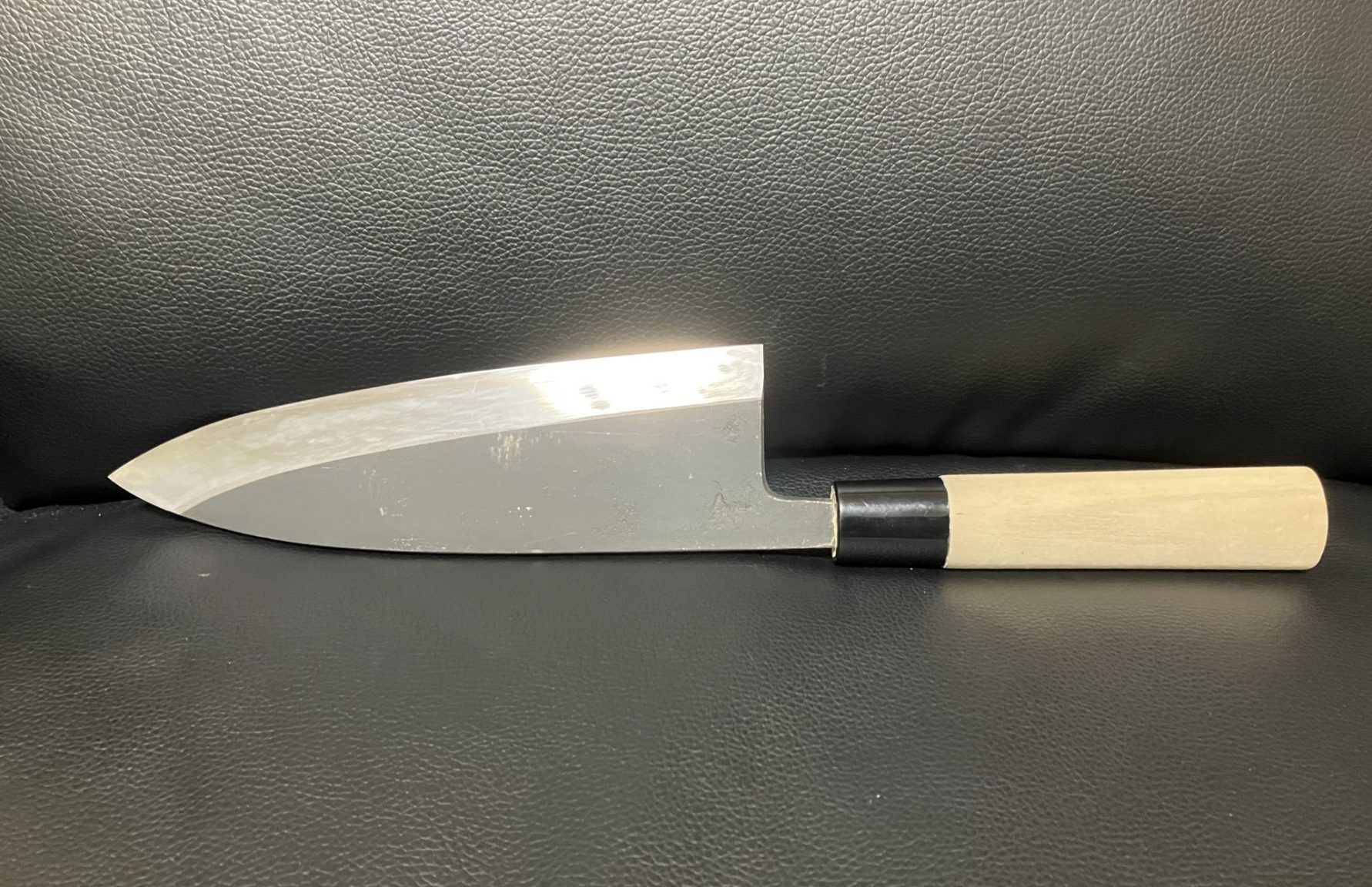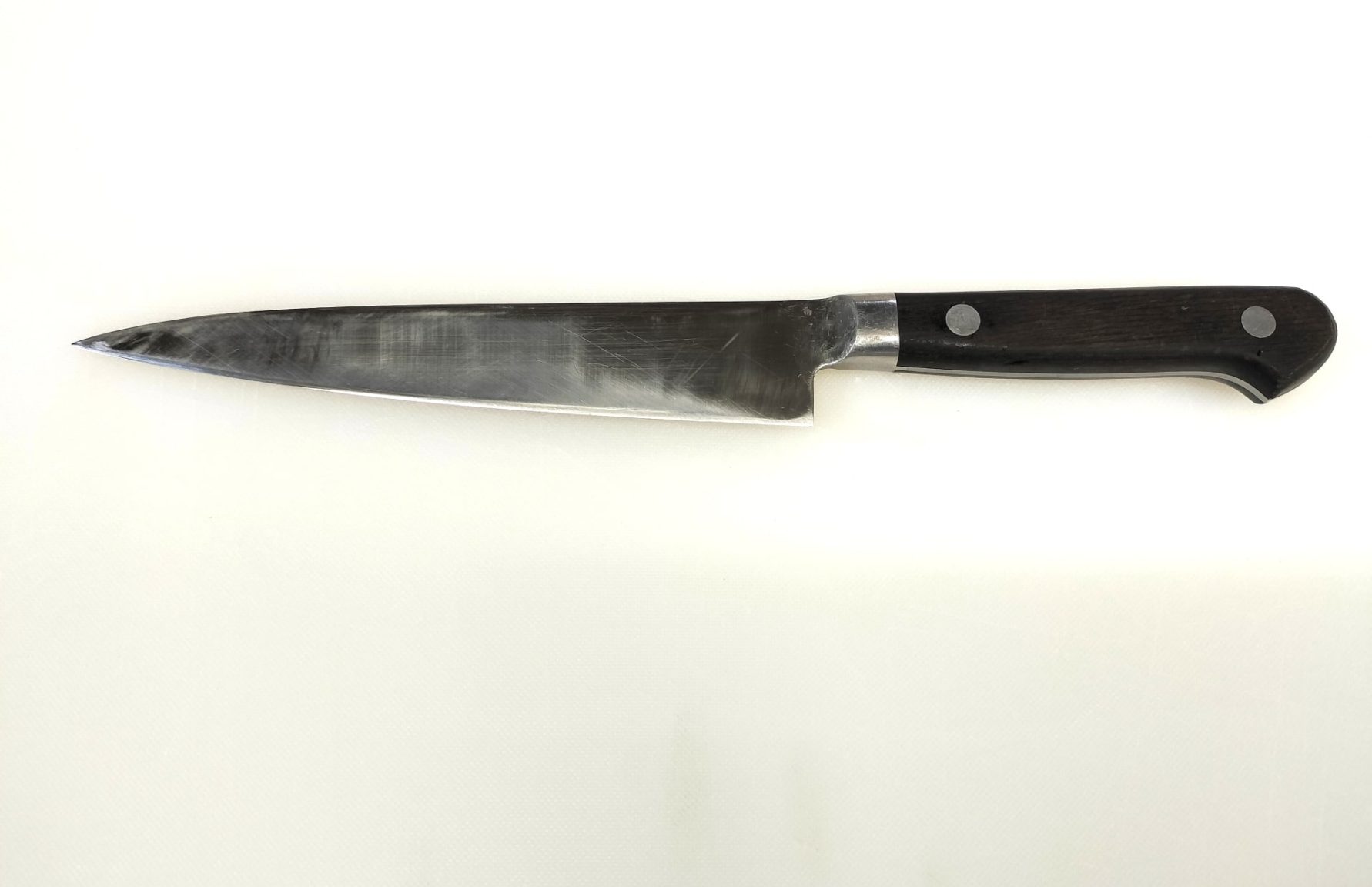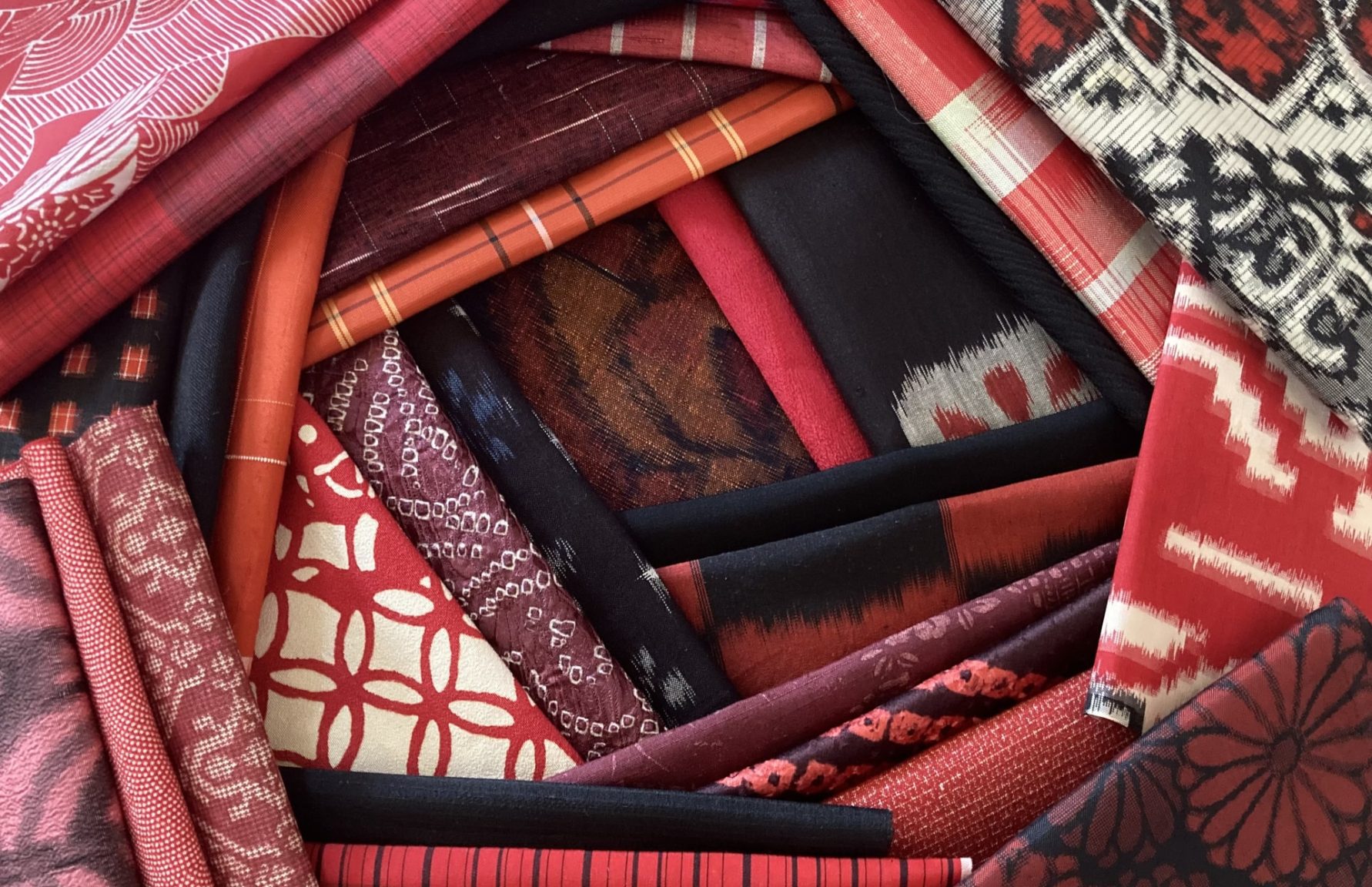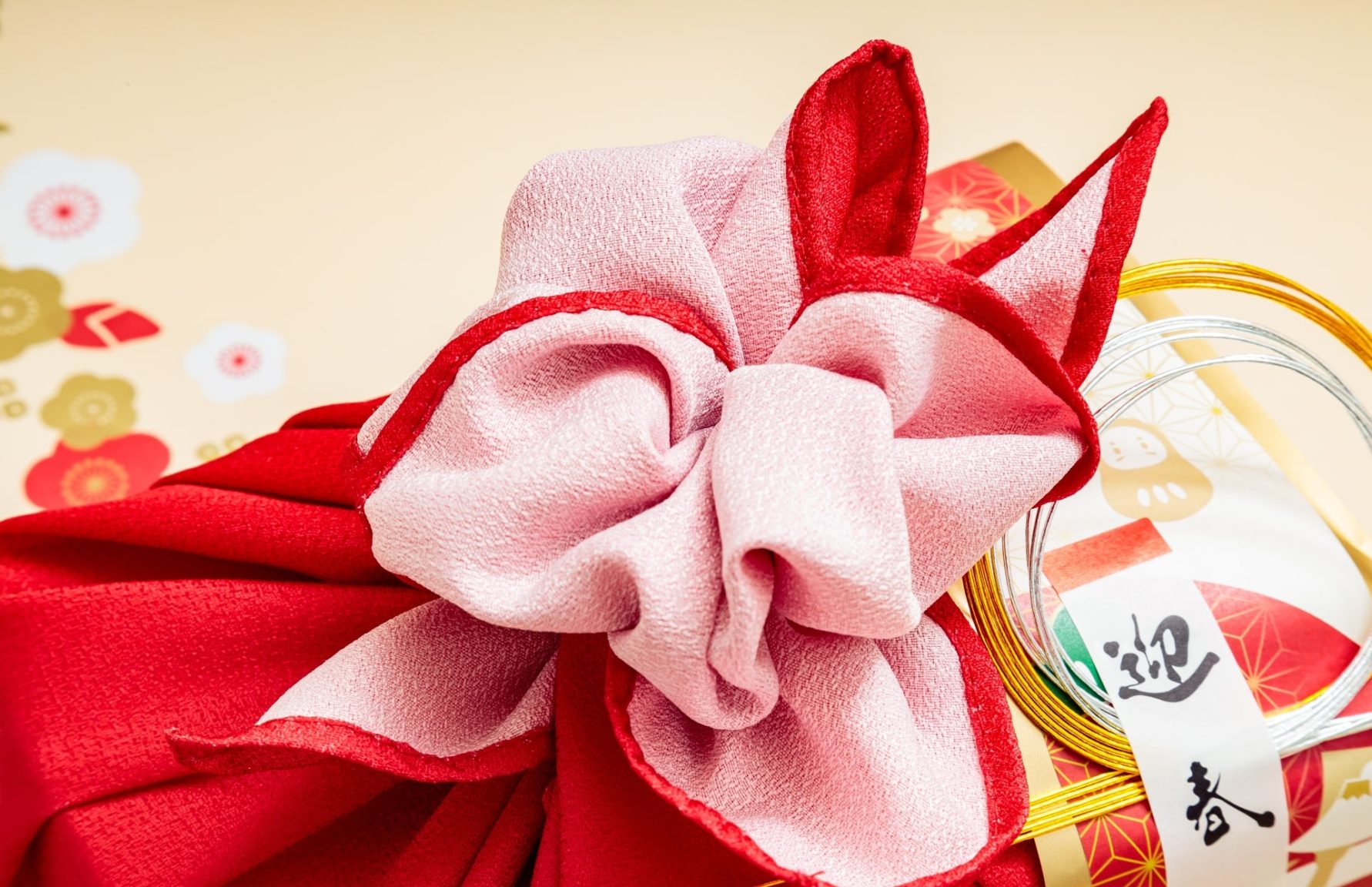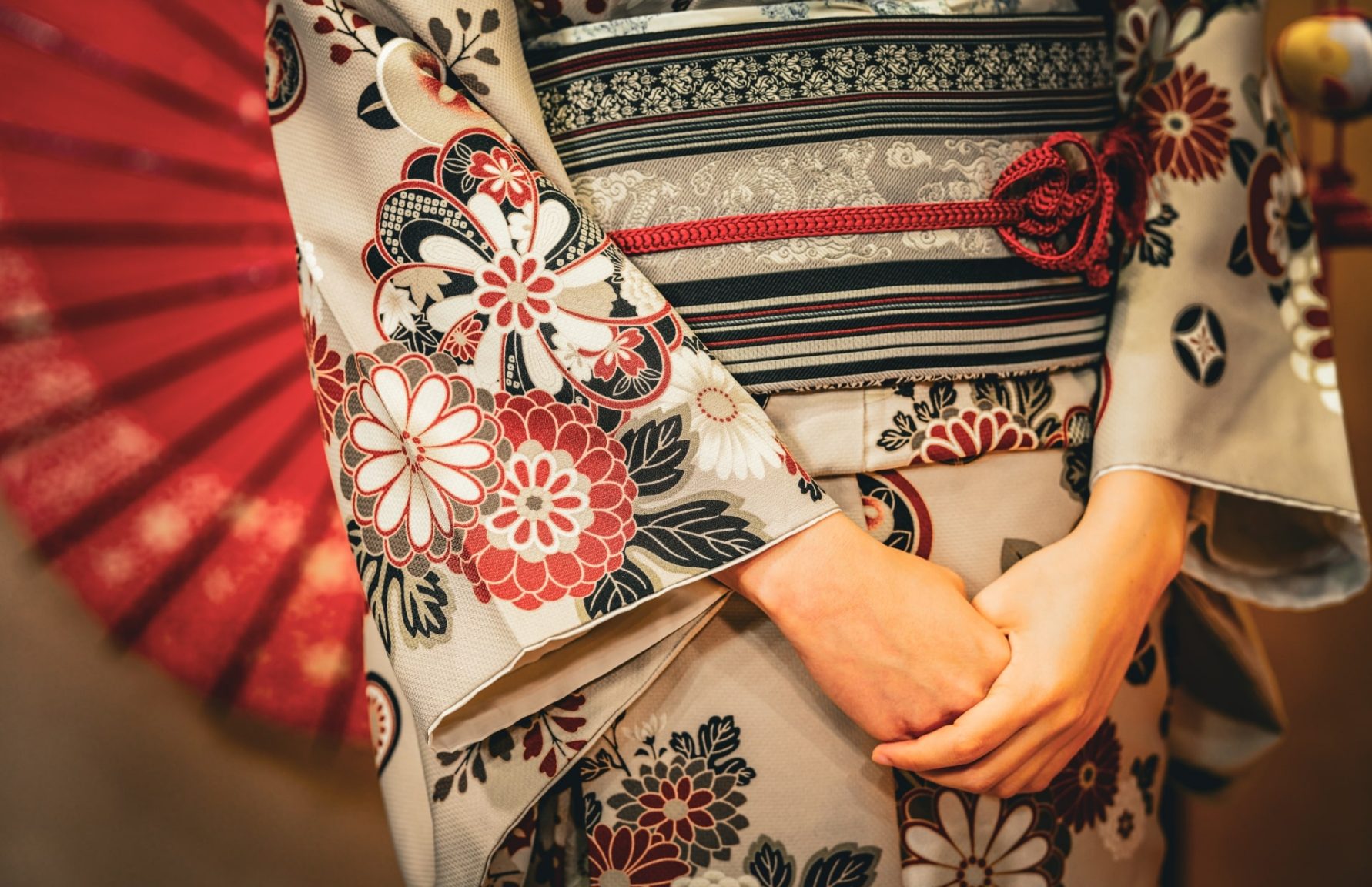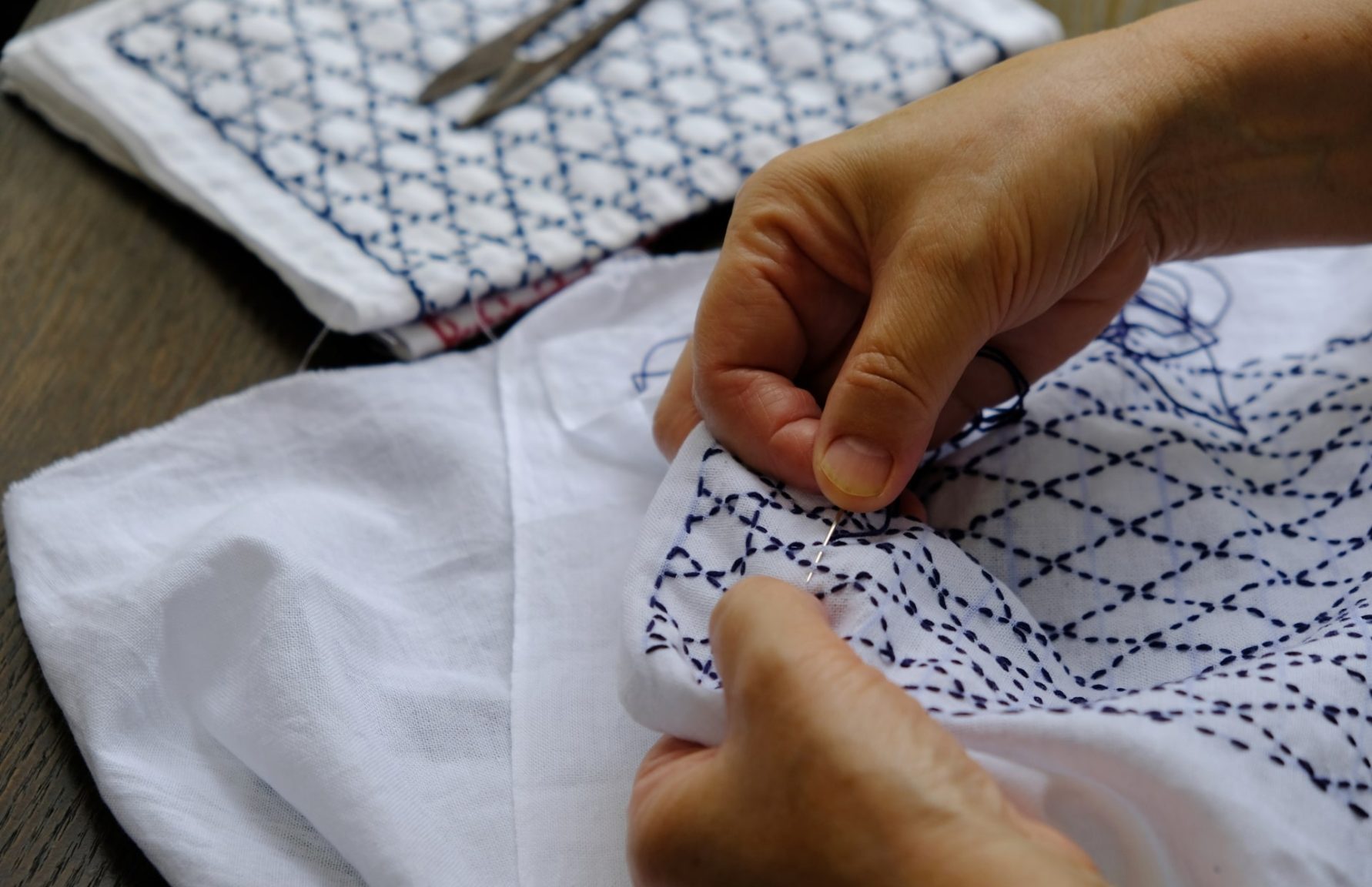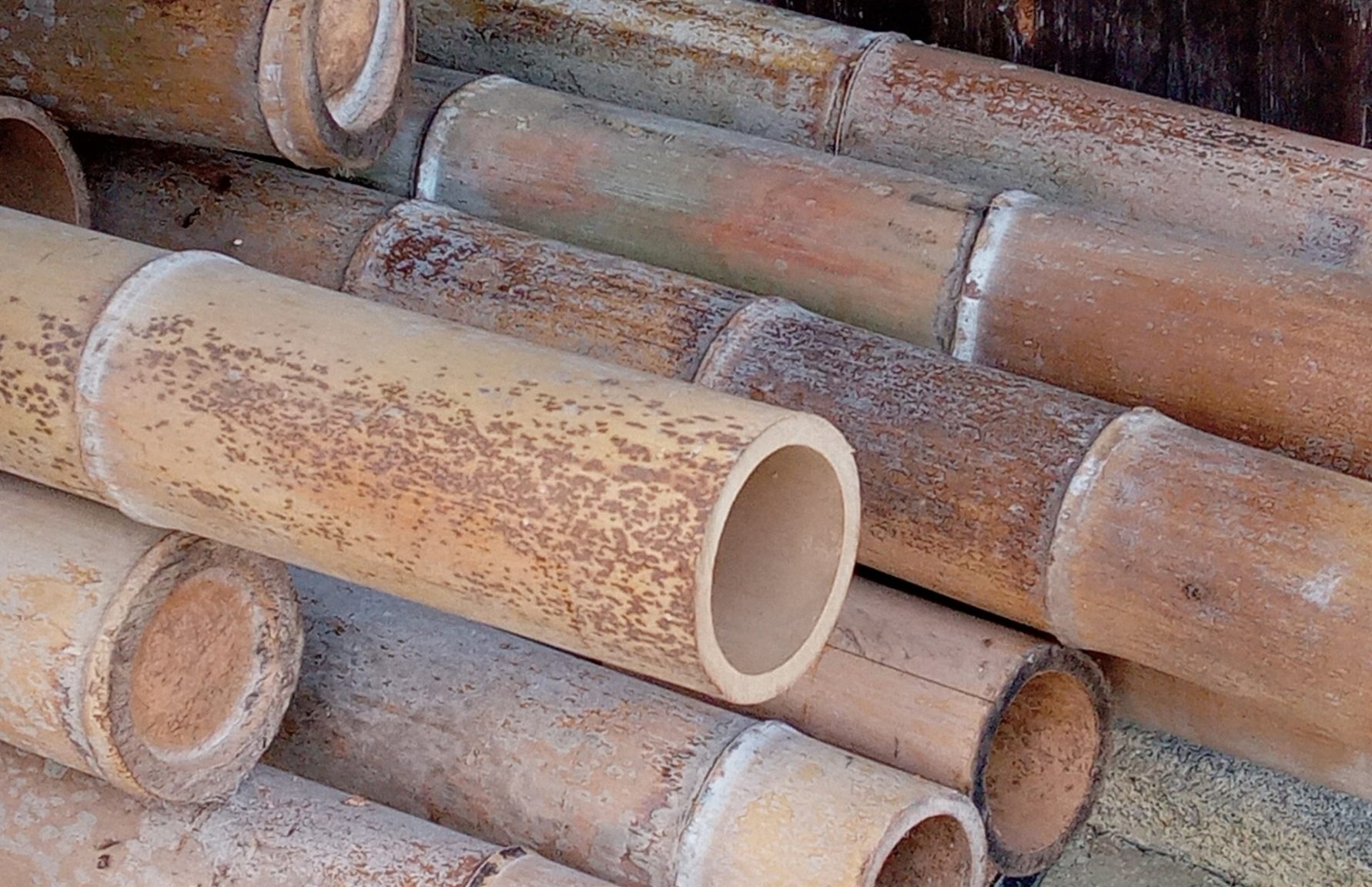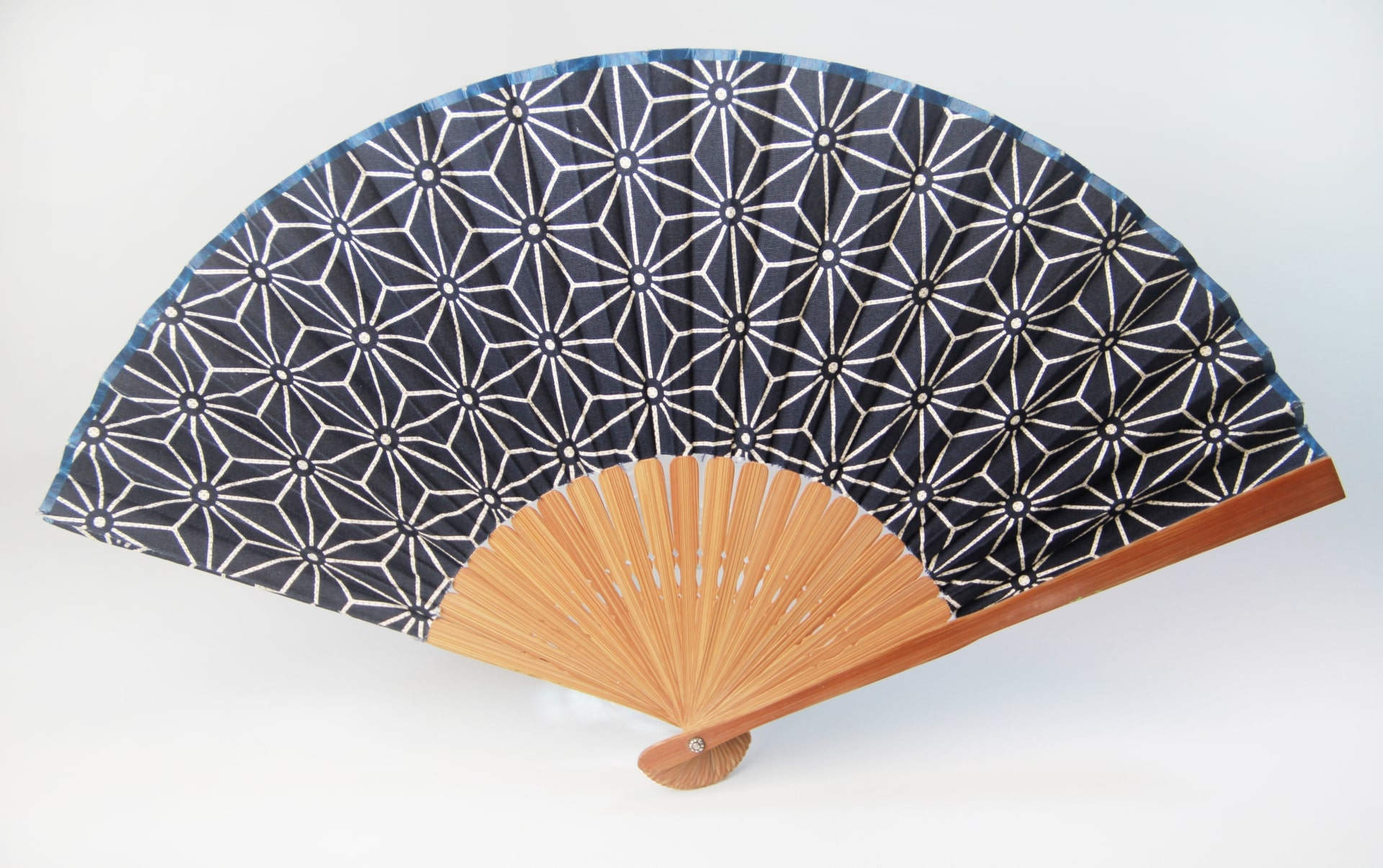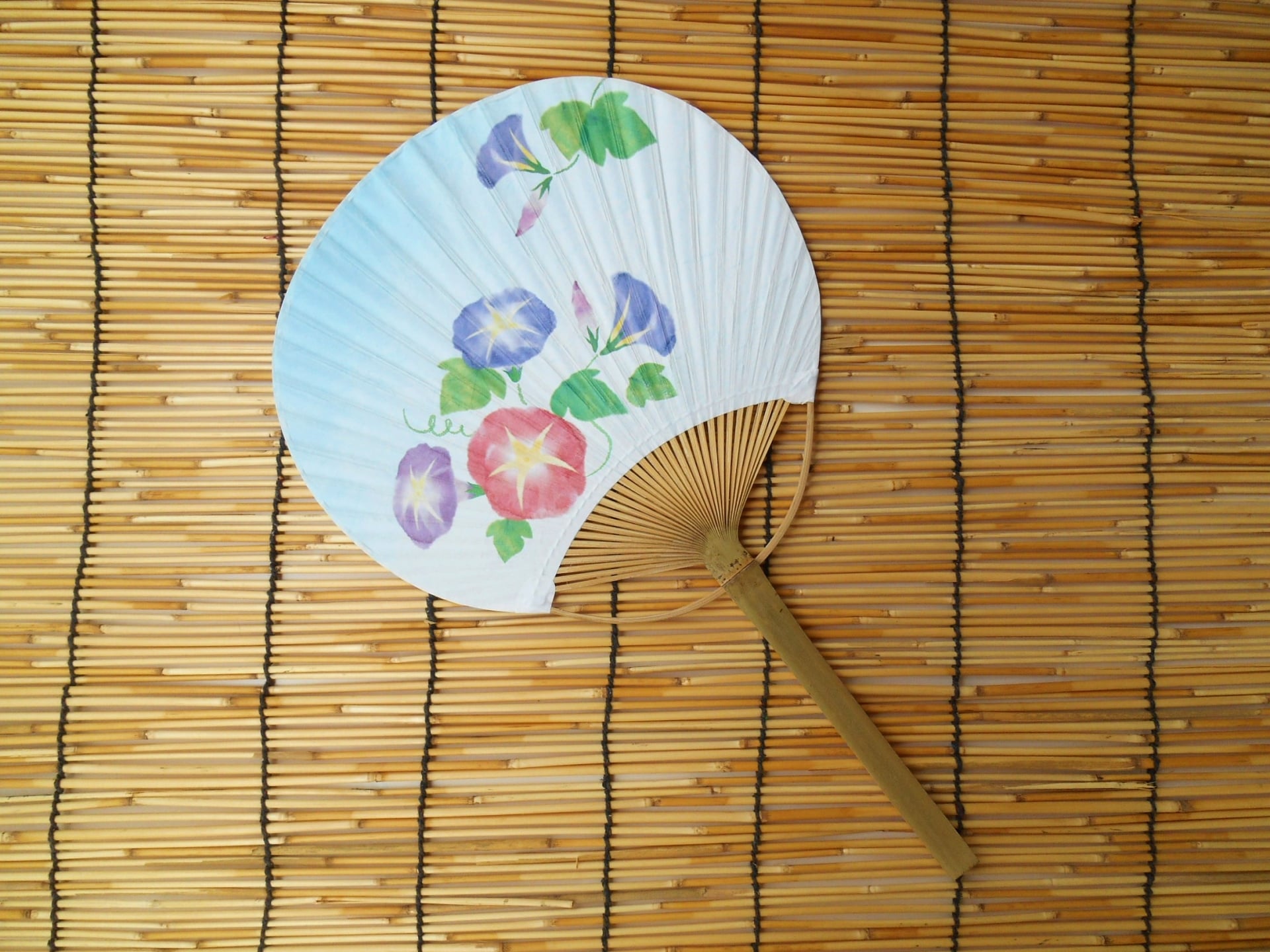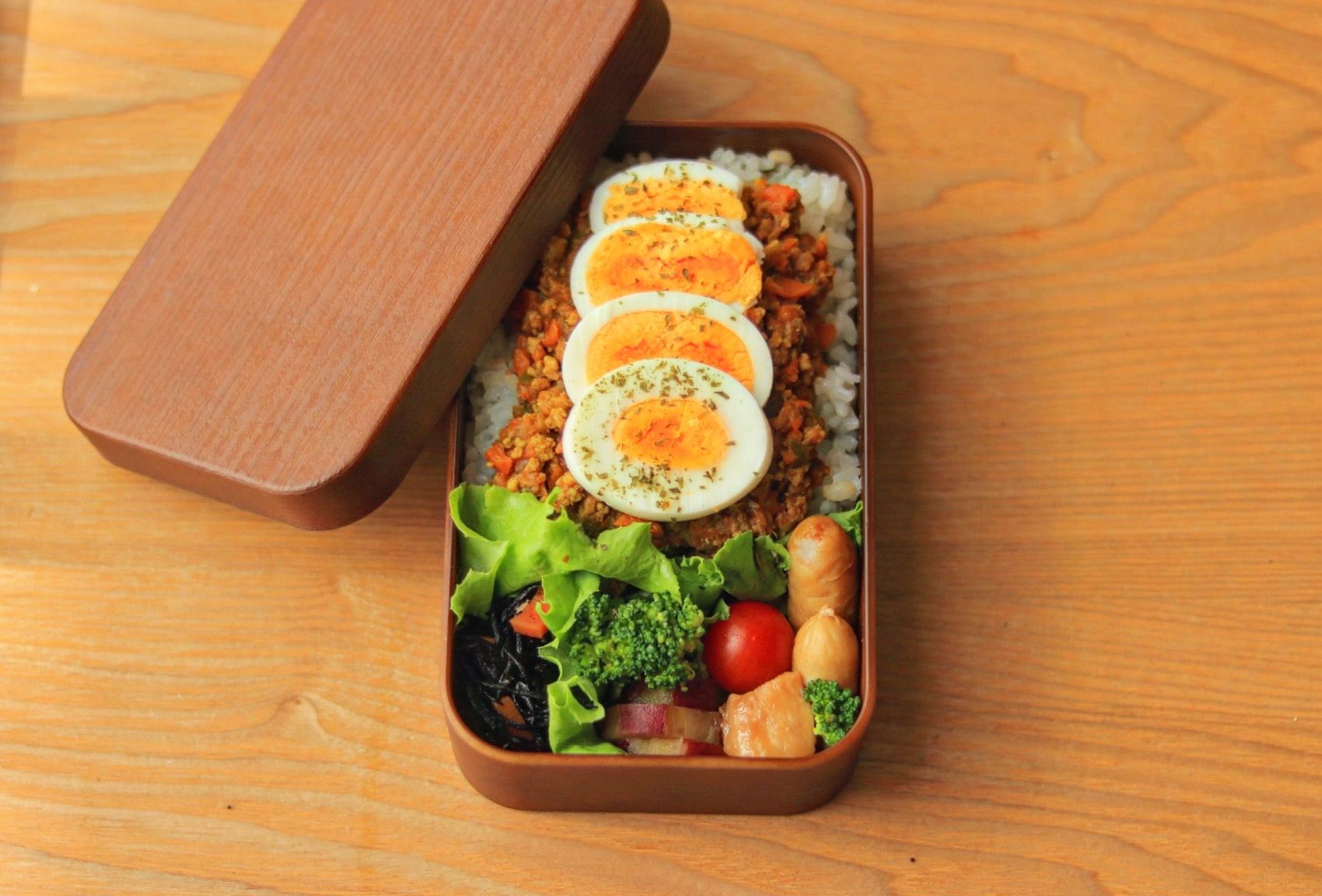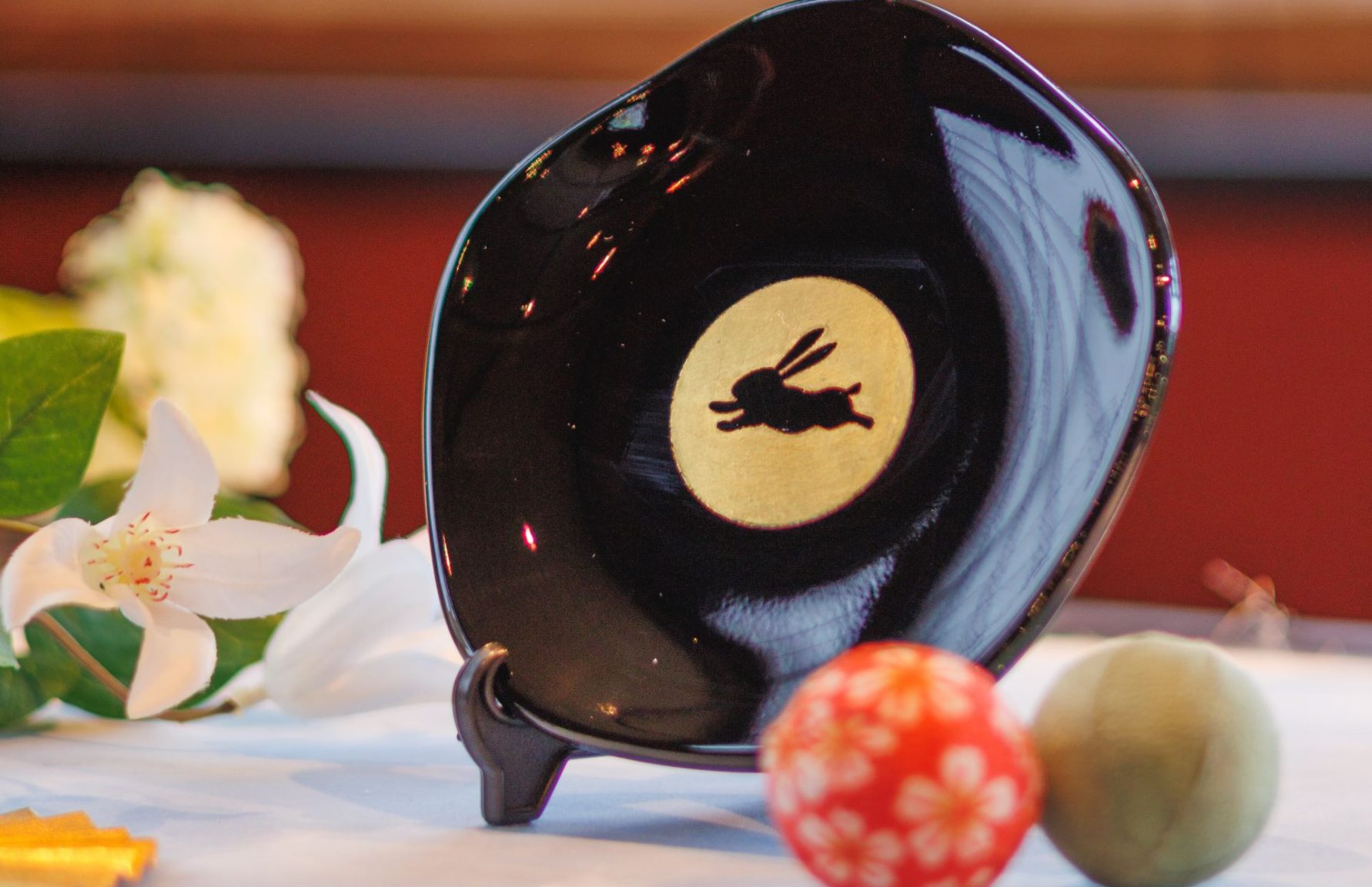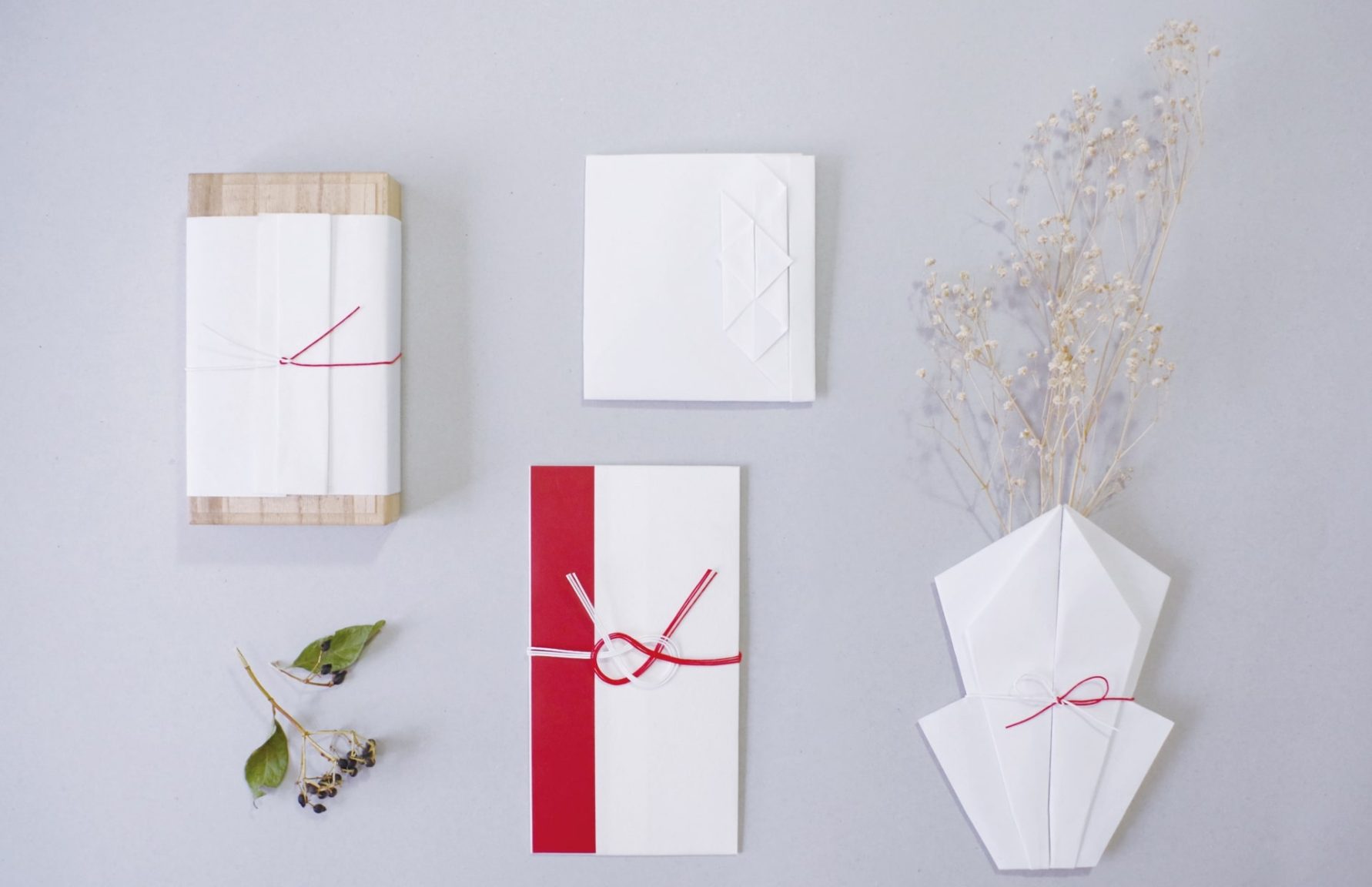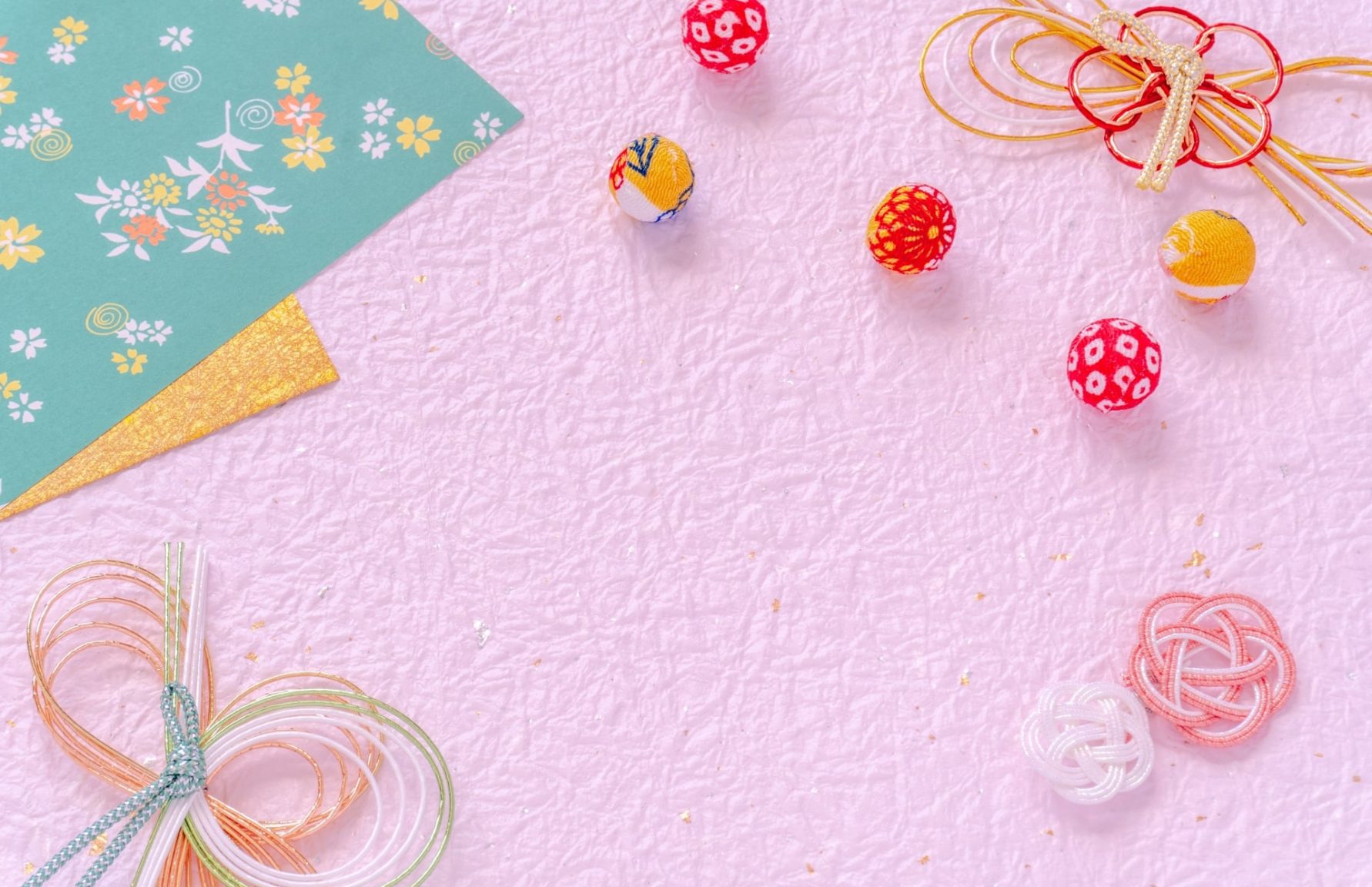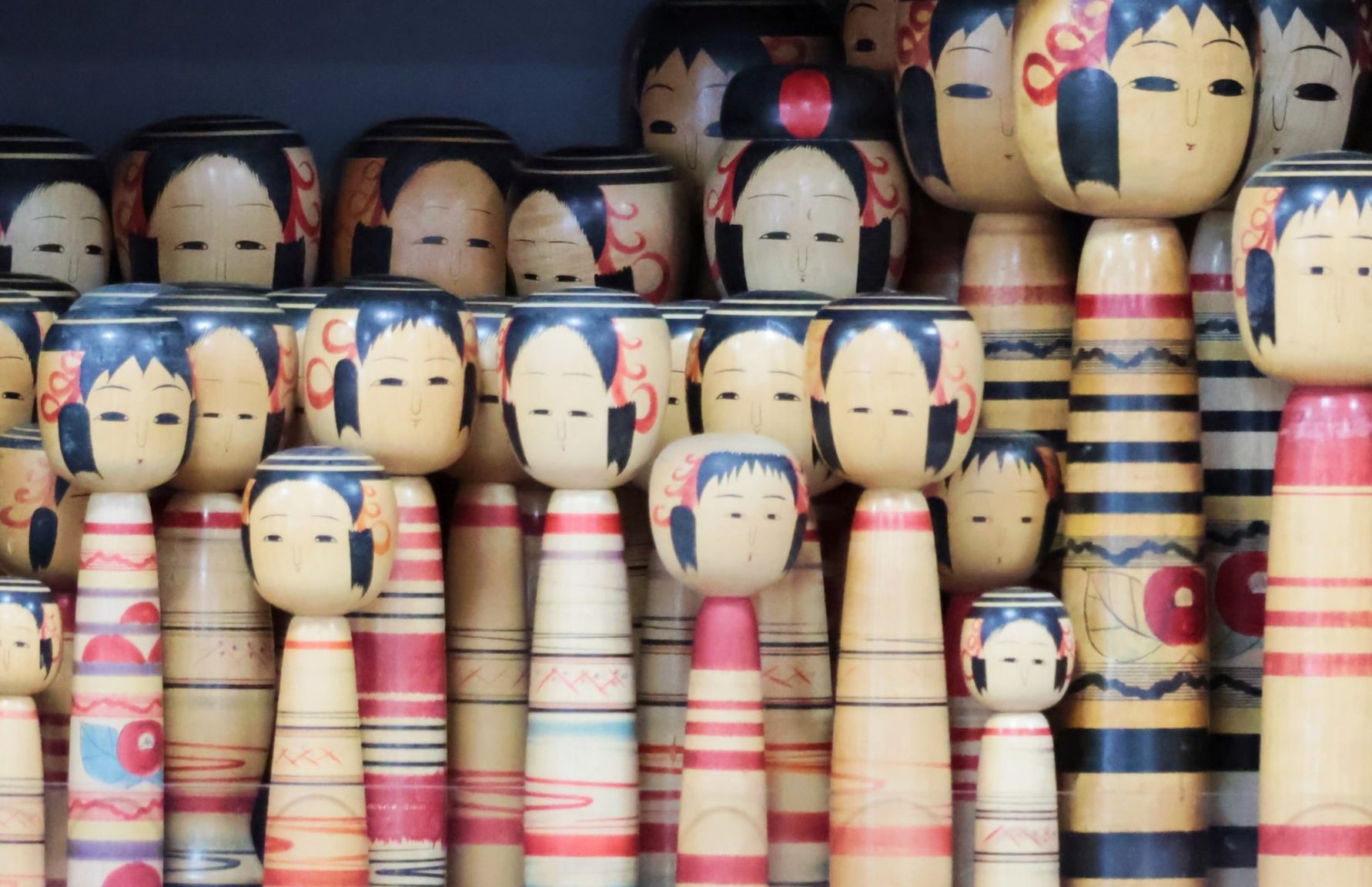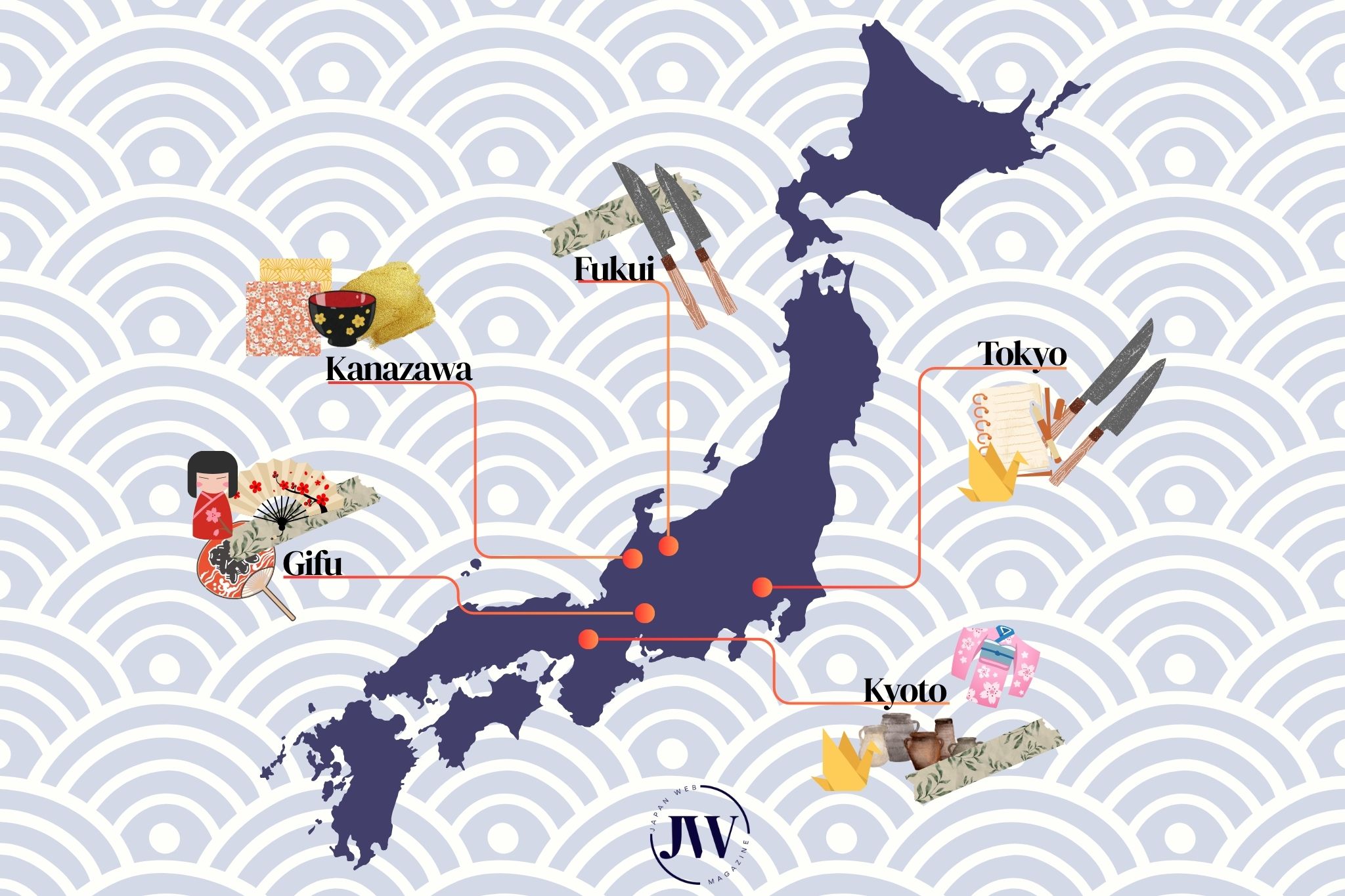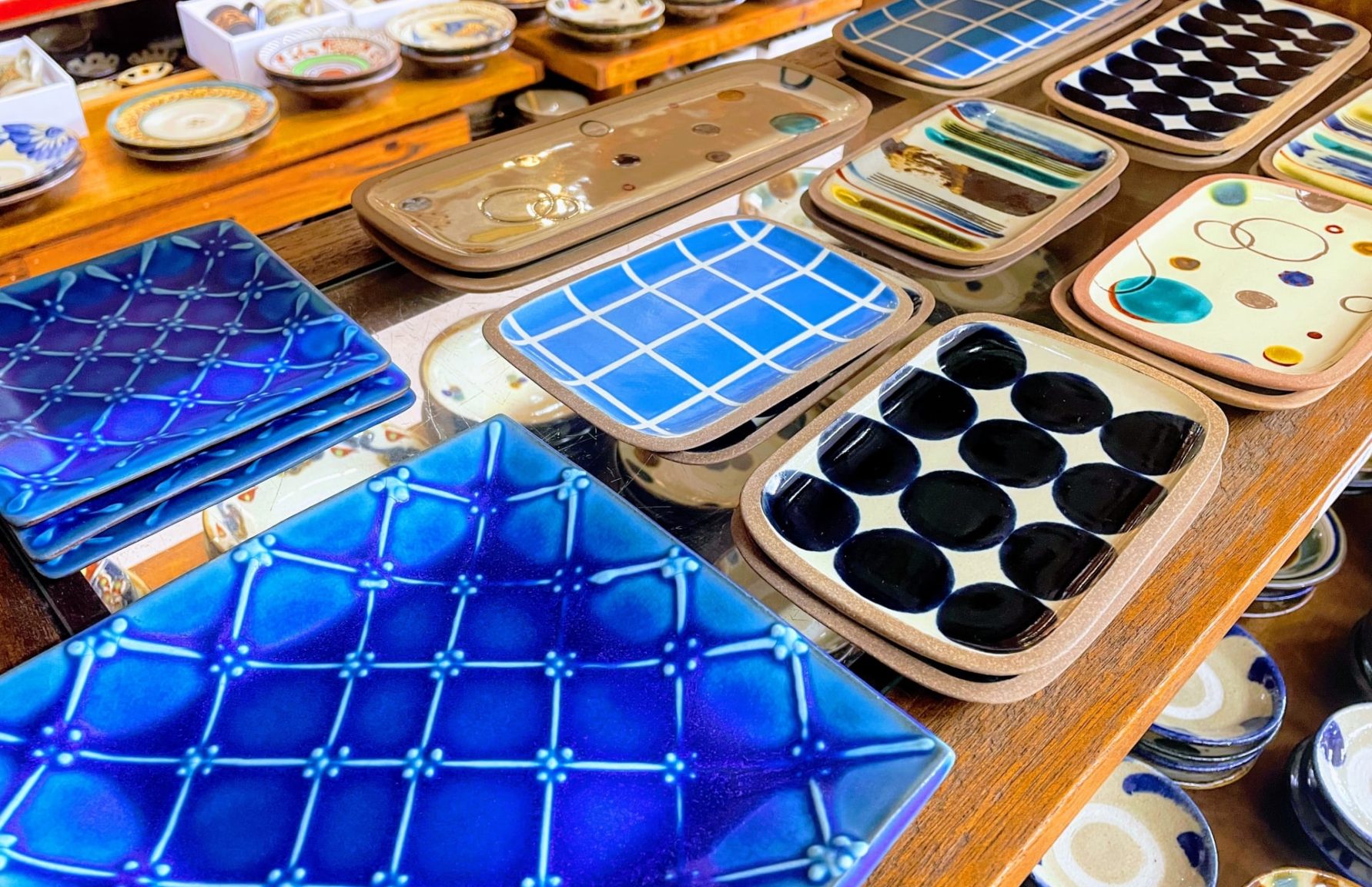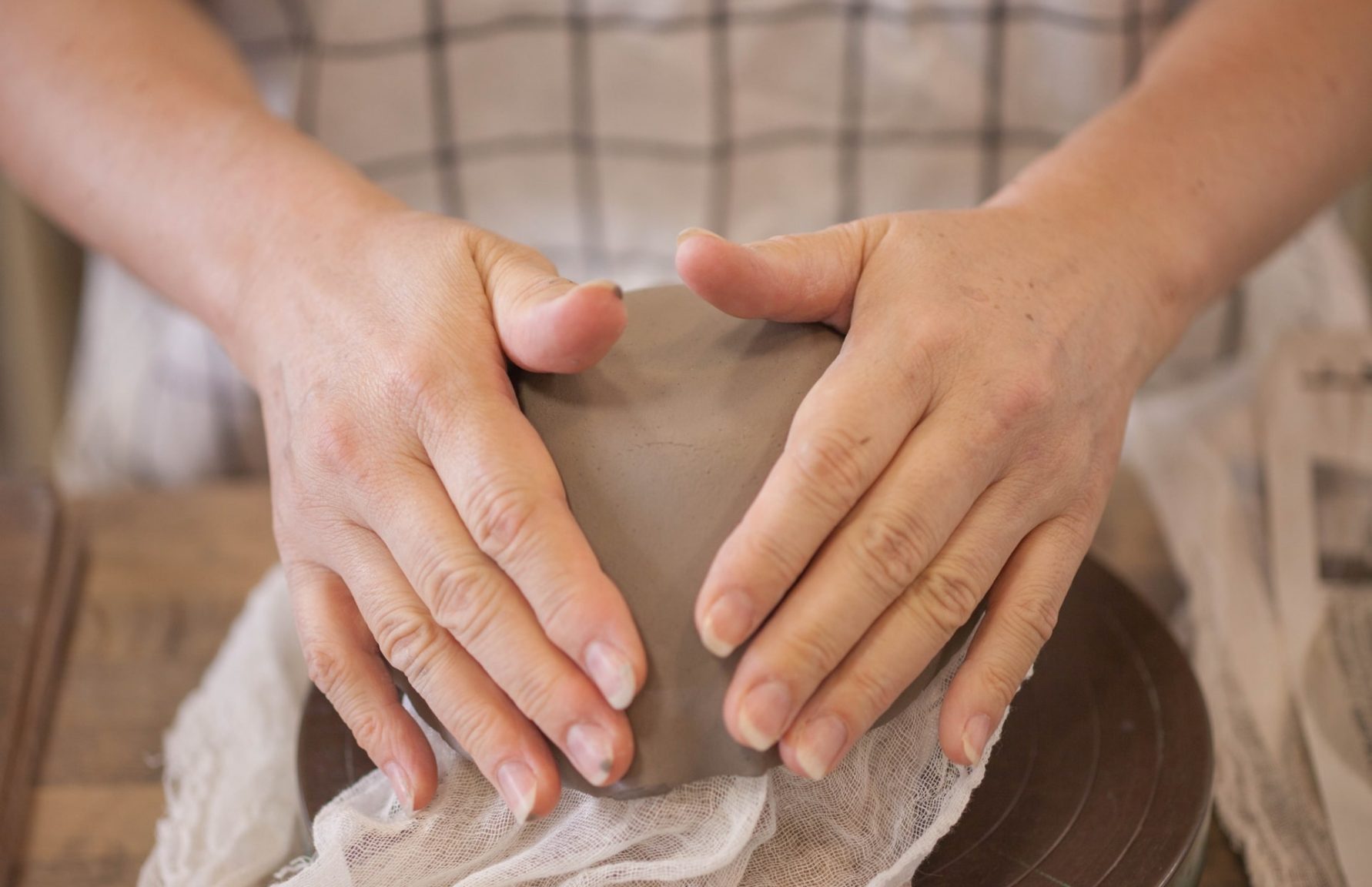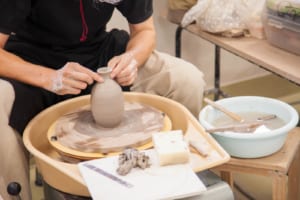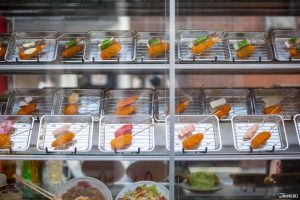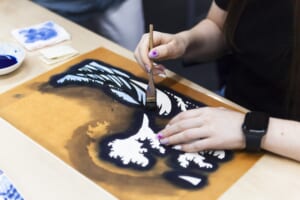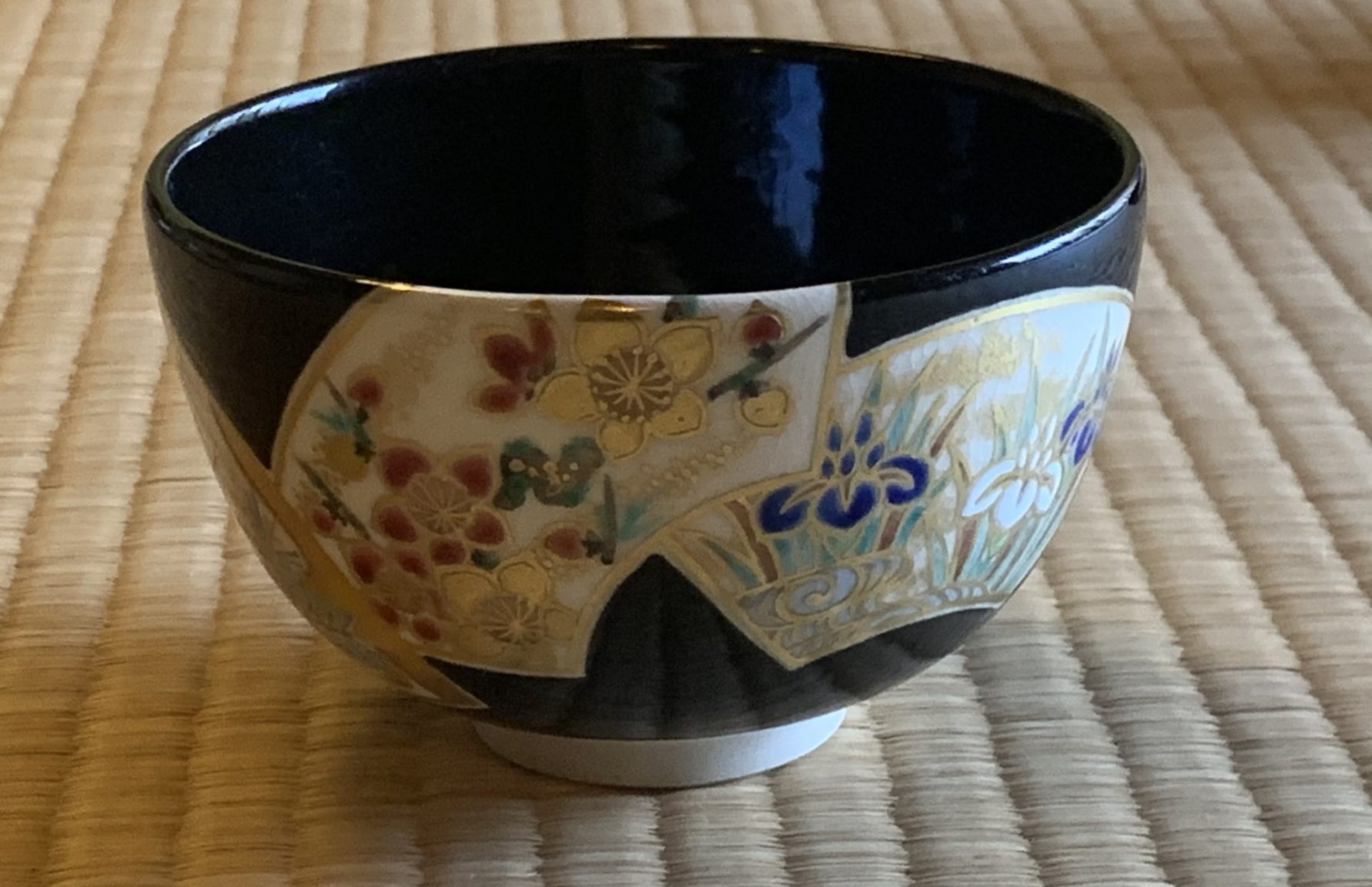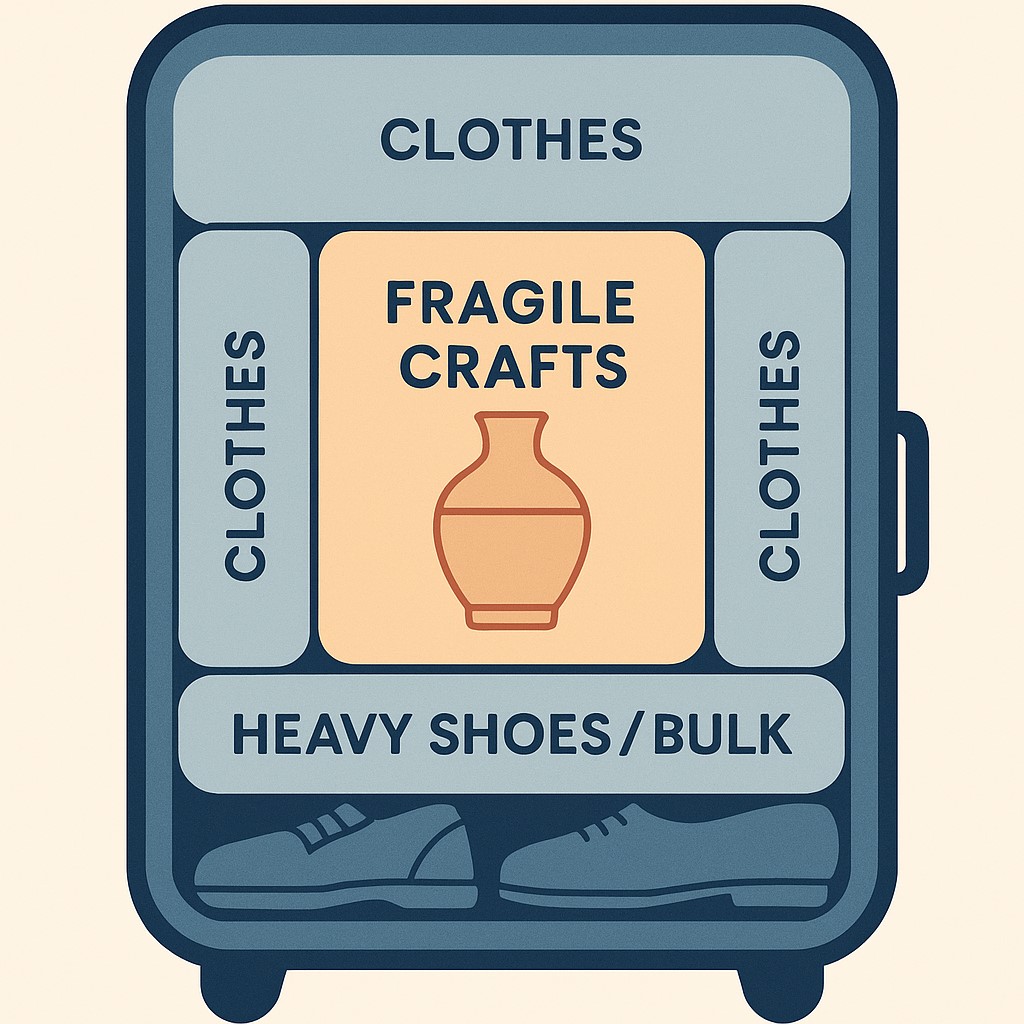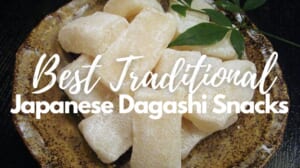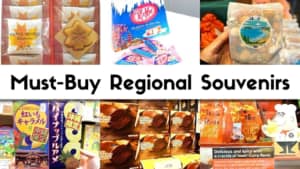Authentic Japanese Crafts and Traditional Souvenirs: What to Buy and Where to Find Them
Traditional Japanese Crafts and Souvenirs: A Complete Buying Guide

Japan’s craft culture is an integral part of daily life, spanning everything from hand-thrown pottery in a Kyoto workshop to finely carved bento boxes in rural Gifu. For travelers, bringing back a souvenir made by an artisan’s hands is more than a transaction; it’s a way to hold onto that experience in a tactile, meaningful way.
Japan’s traditional crafts have deep roots in regional identity, religion, and even philosophy. Take wabi-sabi, for example, the Japanese aesthetic that embraces imperfection, which is reflected in rough-glazed tea bowls or repaired pottery. Centuries of design principles live on in textiles, lacquerware, and paper goods; pretty objects that are physical expressions of their respective craftsmanship values.
This is also why not all souvenirs are created equal. While keychains and plastic kimonos line airport gift shops, there’s a clear line between mass-produced novelties and true artisan work. Understanding that difference and knowing what to look for helps ensure your yen is well spent.
So, why does this matter? Because finding the right souvenir, besides a nice memento of your journey, is about choosing something that holds cultural weight, lasts decades, and has a real story behind it.
See also: 20 Best Souvenirs from Japan
Types of Authentic Japanese Crafts and Souvenirs
Japan’s traditional crafts are often regional in origin and centuries old in practice. Each craft reflects the natural resources, cultural heritage, and historical demands of the area where it developed.
What separates an authentic Japanese craft from mass-market imitations is the process: local materials, hand production, and involvement by trained artisans, often recognized by guilds or government-designated craft associations. Hallmarks of authenticity include unique textures, maker’s marks, subtle irregularities from manual work, and signs of age or patina in vintage items.
Related: 5 Most Praiseworthy Japanese Traditional Crafts & Must-Buy Authentic Souvenirs from Japan
The following are some of the most recognized and respected categories:
Ceramics and Pottery
Ceramics are among Japan’s most collected crafts. They’re not just functional but embedded with philosophical and regional identity. From formal tea bowls to everyday tableware, Japanese pottery ranges from minimalist to decorative, always tied to centuries of experimentation.
Identifying a high-quality piece involves checking for hand-applied glazes, slight asymmetries in shape, and signatures or kiln stamps (often on the base). Tourist-grade pieces typically lack these marks and feel mass-produced; too perfect, too light, too uniform.
Where to Buy Traditional Pottery
For trustworthy purchases, visit stores like Takumi Craft, Tokyu Hands, or department stores in Kyoto and Tokyo. These often stock certified regional items with accompanying documentation. For variety, the Kyoto Handicraft Center offers a vetted selection of lacquerware, fabrics, and Kyoto ware ceramics. Crafts Hirosaka in Kanazawa specializes in Kutani ware
Online, platforms such as Japan Objects Store provide global shipping and provenance details for most pieces.
More info: 10 Famous Types of Japanese Pottery
Related: Kintsugi Experience in Tokyo: Japanese Traditional Art of Broken Pottery
Arita Ware
Arita ware is considered Japan’s first porcelain, developed in Saga Prefecture since the early 17th century with techniques learned from Korean artisans and refined through trade with China and the Netherlands. It’s distinguished by its crisp white base and colorful enamel paintings, often featuring birds, flowers, or geometric motifs. High-end Arita ware can be found in department stores or kilns directly in Saga Prefecture. Pieces tend to be lightweight, often marked with kiln signatures or regional stamps.
Mashiko Ware
Mashiko ware rose to prominence in the 20th century as part of the Mingei folk craft movement. This earthenware from Tochigi Prefecture is favored for rustic textures, the modesty of form, and earthy glazes, typically brown, grey, or ochre. Often made by small-scale kilns, it remains affordable and practical, yet highly valued by collectors for its direct connection to traditional craft philosophies.
Raku Ware
Unlike most, Raku ware isn’t wheel-thrown but shaped by hand, low-fired, and removed from the kiln while hot, which produces unique glaze effects and natural cracking. This style is especially prominent in Kyoto and dates back to the 16th century and has strong ties to Zen Buddhism and the wabi-sabi aesthetic, so it’s been historically tied to the tea ceremony. Authentic Raku pieces carry the signature of the Raku family or certified apprentices.
Japanese Knives
Japanese knives are among the most sought-after tools by chefs, collectors, and culinary travelers. Their design roots trace back to katana forging traditions, and many blacksmiths who once made swords now specialize in kitchen cutlery. These knives are made with precision and purpose, often combining aesthetic appeal with surgical functionality: each blade is crafted for specific ingredients and cutting motions.
What makes them stand out: higher carbon content, thinner profiles, sharper angles, and handcrafted finishes. Some are single-beveled (only one side is sharpened) for ultra-precise cuts, while others are double-beveled for versatility.
Where to Buy Authentic Japanese Knives
Japan has several well-known hubs for knife shopping. Kappabashi Street in Tokyo is a go-to district for culinary professionals. Sakai City in Osaka, with its 600-year blacksmithing tradition, is the birthplace of many premium knife brands. Echizen in Fukui is another major center for high-end forged blades.
More info: The Guide to Best Japanese Knives
Trusted Brands and Blacksmiths
- Masamoto – historic Tokyo-based brand, known for chef-quality blades
- Shun – internationally recognized, polished finish with VG10 stainless
- Yoshihiro – premium handcrafted knives, often sold online
- Sakai Takayuki – revered Sakai producer with wide price and material range
What to Ask In-Store
- Is this knife forged or stamped?
- Do you offer sharpening or maintenance services?
- What are the handle materials (e.g., pakkawood, magnolia)?
- Can I choose between right-handed and left-handed bevels?
Online Retailers with Certification
- Japanny – wide selection, artisan bios, English support
- Knife Japan – sells blades from Echizen and Sakai blacksmiths with export licenses
- Korin – NYC-based, with verified Japanese imports and expert staff
Gyuto (Chef’s Knife)
The Gyuto is often a chef’s first Japanese knife. While inspired by French and German chefs’ knives, its thinner blade and lighter weight allow for quicker, cleaner cuts. It’s typically 210–270mm in length with a slightly curved blade for rocking motion. It’s ideal for meats, vegetables, and herbs, making it suitable for both Western and Japanese cuisine.
Santoku
Santoku knives are popular in Japanese households as multipurpose knives with a flatter edge, because of their ease of control. Their name roughly translates to “three virtues”, since it’s designed for slicing, dicing, and chopping. The blade tends to be around 165–180mm and is shorter and lighter than the Gyuto. Its flat edge is perfect for push-cutting and chopping.
Nakiri
The Nakiri is used almost exclusively for vegetables. With a squared tip and flat profile, its straight edge allows it to make full contact with the cutting board, no rocking needed. It’s ideal for precise, uniform slices and is often used in traditional vegetarian cuisine (shojin ryori) or home kitchens where vegetable preparation is frequent.
Deba
Used mainly by professionals, the thick and heavy Deba knife handles tasks that require force and precision, such as breaking down fish. Its weight helps cut through fish bones without damaging delicate flesh, and its single-bevel edge allows for highly controlled filleting, but using it properly requires dedicated skill due to its weight and sharpness.
Petty Knife
Typically 120–150mm in length, the petty knife is a smaller companion to larger knives like the Gyuto. It’s precise and nimble, ideal for tasks that require close-hand control, such as peeling, trimming, and garnishing or deveining shrimp.
Buying Guide Table
| Knife Type | Best Use | Blade Type | Average Price (JPY) |
| Gyuto | All-purpose (meat, veg) | Double bevel | ¥10,000–¥30,000 |
| Santoku | Home use, mixed prep | Double bevel | ¥6,000–¥20,000 |
| Nakiri | Vegetables only | Double bevel | ¥7,000–¥25,000 |
| Deba | Fish butchery | Single bevel | ¥8,000–¥30,000 |
| Petty | Small cuts, garnishing | Double bevel | ¥5,000–¥18,000 |
Textiles and Fabrics
Japan’s textile traditions span centuries and represent both everyday utility and ceremonial craftsmanship. While the kimono may be the most iconic, smaller textiles like furoshiki and tenugui are practical, collectible, and easy to carry home. Many pieces are still produced with traditional dyeing techniques like katazome or shibori, and some are hand-loomed from start to finish.
Some of these fabrics can double as functional art. A high-quality textile can be used daily or framed and displayed. Look for hand-stitching, natural indigo dyes, and subtle irregularities that signal human handiwork.
Best Places to Shop for Textiles
Nippori Fabric Town in Tokyo is a haven for DIY enthusiasts and textile collectors, offering everything from bolts of kimono silk to modern cotton prints. In Kyoto, the Nishijin Textile Center showcases brocade weaving techniques with live demonstrations. Kanazawa’s boutique shops often sell hand-dyed tenugui and sashiko work made by regional artisans.
Look for workshops that offer made-to-order or customized items—a common service in many textile hubs. Also, many of these stores will vacuum-pack fabric items for easy suitcase packing.
Furoshiki
Furoshiki are essentially multi-use square cloths, usually in 45–70cm sizes, that can be tied into bags, wrapped around lunch boxes, or used as eco-friendly gift wrap. While simple in design, they often feature motifs reflecting Japanese seasons or nature. Modern designers have also reimagined furoshiki with contemporary patterns and water-resistant fabrics.
Tenugui
Tenugui are popular with travelers thanks to their lightweight size and affordable price. These thin cotton cloths are used historically as a towel, headband, or decoration, but also make excellent gifts, wall hangings, or even wearable accessories. Unlike towels, tenugui lack stitched edges, allowing them to dry faster and wear in naturally over time. Many are hand-dyed using chusen or katazome methods and are often themed around seasonal festivals, animals, kabuki, or landscapes.
Kimono
The kimono remains one of the most distinct symbols of Japanese heritage. This traditional full-length robe is often made from silk, linen, or cotton, depending on its category: formal (e.g., furisode, tomesode), or casual (yukata).
While formal versions can be prohibitively expensive and complex to wear, secondhand stores and specialty shops sell casual yukata and vintage kimono at accessible prices. Modern adaptations are also popular, blending kimono-style fabrics into scarves, jackets, and bags.
Sashiko
Sashiko began as a utilitarian technique, used to patch and strengthen clothes, but has since become an art form. The geometric patterns are rich in symbolism and ideal for decorative pieces like coasters, placemats, or clothing accents. Many artisans today create hand-stitched sashiko pieces using traditional tools and plant-dyed thread.
Wood and Bamboo Crafts
Wood and bamboo crafts in Japan merge minimalist design with enduring practicality. The use of local, sustainable materials is central to these traditions. Artisans often work with Japanese cypress (hinoki), zelkova, or bamboo harvested in specific regions known for climate and soil quality that influence texture and flexibility.
Many wood and bamboo items are made without nails or adhesives, held together through joinery techniques honed over generations. They age gracefully, developing a patina that reflects years of use.
Regional Highlights for Woodcraft
Each region brings its own character to wood and bamboo craftsmanship. Akita is synonymous with traditional kokeshi dolls, often sold at local museums or roadside craft stations. Gifu has perfected the folding fan, with a lineage of fan-makers going back centuries. In Beppu, artisans specialize in weaving bamboo into baskets, trays, and intricate décor pieces.
Markets like the Beppu Bamboo Festival and smaller prefectural craft fairs give travelers a chance to buy directly from artisans, and sometimes see live demonstrations. Pricing is often better, and the provenance is clearer than in department store gift sections.
Wooden lacquered items are quite widespread. Highlights include Kamakura-bori in Kanagawa, which involves carving intricate designs into wood before applying lacquer, giving a sculptural effect; Wajima-nuri in Ishikawa, on the other hand, is known for its durability, thanks to the use of powdered earth for added strength.
Kokeshi Dolls
Kokeshi are the wooden dolls with cylindrical bodies and painted faces, originating in Tohoku during the Edo period as children’s toys and gradually evolving into collector items. The dolls are turned from a single block of wood and hand-painted, often with floral motifs.
They can be found often in two styles: Naruko (regional, classic) and Creative Kokeshi (modern variations). No two are exactly alike. Look for the artisan’s signature on the base as a sign of authenticity.
Fans (Sensu and Uchiwa)
Japanese fans are practical in the humid summers but also carry aesthetic and symbolic weight, so we can find them used for ceremonies as much as in fashion or and summer festivals. Sensu fans are foldable fans with bamboo ribs and washi paper, while Uchiwa are flat paddle-style fans often made from single bamboo strips.
They’re a popular gift, with patterns often reflecting seasonal changes. In Kyoto, you can find artisanal fan shops where craftspeople still apply washi paper by hand. Uchiwa are typically used for promotional purposes, but handmade versions, especially from Gifu, are valued for their craftsmanship.
Bento Boxes
These multi-compartment lunch boxes are generally made from wood or bamboo. Craftsmen from areas like Shiga and Nagano specialize in hand-lathed cedar and cypress boxes, while artisan boxes often feature urushi (lacquer) finishes. They’re breathable, lightweight, and preserve the taste of food. Some are even carved from a single piece of wood and sealed with natural resins.
Care instructions matter. These should be hand-washed, air-dried, and occasionally oiled with natural food-safe oils to maintain longevity.
Lacquerware and Gold Leaf
Japan’s lacquer tradition, known as urushi, is one of the country’s oldest and most refined decorative arts, dating back over 9,000 years. It involves applying multiple layers of sap from the lacquer tree to wood surfaces, creating a durable, water-resistant finish with a distinct deep sheen.
Lacquerware is also a common base for gold leaf decoration, which is strongly linked to Kanazawa, the producer of over 99% of Japan’s gold leaf. The most common techniques include sprinkling gold powder to wet lacquer to create detailed designs (Maki-e) or using thin sheets of gold leaf, carefully laid over surfaces (overlay). One of the best places for gold leaf-accented goods is the historic Higashi Chaya district, filled with small galleries and artisan shops.
Japanese Paper Goods
Japanese paper goods, particularly washi, reflect the attention to detail that defines traditional Japanese crafts. Made using long fibers from the inner bark of mulberry, gampi, or mitsumata shrubs, washi is stronger and more flexible than Western paper. It has a soft, slightly fibrous texture that absorbs ink differently, making it a favorite among calligraphers, artists, and designers.
Washi production is still practiced in regions like Mino (Gifu) and Echizen (Fukui), where papermaking villages offer guided tours. The UNESCO designation of washi as an intangible cultural heritage underscores its cultural significance and continued relevance.
Where to Shop for Quality Paper Items
Itoya Ginza is a flagship for premium paper lovers, offering everything from limited-edition letter sets to custom notebooks. Kamiji Kakimoto, operating since 1891, focuses on handmade washi and offers rare washi types not easily found elsewhere.
Online platforms like Washi Arts and The Journal Shop curate Japan-sourced paper products and ship internationally, often with clear product origins and artisan profiles included. Look for shops that specify region and maker; this adds credibility and ensures you’re not buying machine-produced imitations.
Washi Paper
Washi paper is created through a labor-intensive process that includes steaming, stripping, soaking, and pounding fibers before mixing with water and forming sheets by hand. Each sheet is then pressed and dried on wooden boards.
Premium washi is almost translucent but exceptionally tough. It’s often used for shoji screens, decorative prints, or as a canvas for watercolor and sumi-e art. Specialty stores may carry textured or patterned varieties, with visible fiber strands and watermark designs that signal artisan quality.
Origami and Decorative Papers
Origami paper isn’t limited to hobby use. In Japan, it’s also a form of gift wrapping and expression, often folded into animals or flowers that symbolize seasonal greetings or good fortune. Decorative paper (chiyogami and yuzen) features traditional motifs like cranes, waves, or plum blossoms. These papers are often produced in Kyoto, where textile-dyeing techniques have been adapted to paper.
Good origami paper doesn’t tear easily and folds crisply. These traits can be checked even with sample sheets offered in-store.
Stationery and Journals
Japan’s stationery culture is serious. Even chain stores like Loft, Tokyu Hands, and Itoya dedicate entire floors to notebooks, envelopes, calligraphy sets, and washi tape. Artisan brands like Midori or Traveler’s Company use washi or hybrid paper blends in their journals, prized by bullet journalers and writers for their smooth texture and ink-friendliness.
Look for journals hand-bound with thread or finished with fabric covers, a sign they’re not mass-produced. Many shops allow test writing, so bring your favorite pen to try before buying.
Practical Buying Tips for Travelers
Buying Japanese crafts while traveling isn’t like picking up souvenirs at the airport gift shop. Prices vary widely depending on the region, materials, and the artisan’s reputation. And if you’re planning to take these items home in your suitcase, knowing how to pack them properly is just as important as knowing what to buy.
Budgeting: Realistic Prices by Category
- Ceramics: ¥3,000–¥30,000 depending on region and technique
- Knives: ¥10,000–¥50,000 for reputable blacksmith brands
- Textiles: ¥1,000 for small tenugui to ¥100,000+ for formal kimono
- Woodcrafts: ¥2,000–¥20,000 depending on complexity and finish
Avoid sticker shock by researching the typical price range of each craft category in advance. Handmade goods are rarely “cheap,” and prices reflect not just material costs but labor, skill, and heritage. Bargain pricing often signals mass production.
Price Table: Average Cost by Craft Type
| Craft Type | Typical Price Range | Notes |
| Pottery & Ceramics | ¥3,000–¥30,000 | Bizen and Kyo-yaki tend to be at the higher end |
| Japanese Knives | ¥10,000–¥50,000+ | Price varies by steel quality and hand-forging |
| Textiles | ¥1,000 (tenugui)–¥100,000+ | Kimono and handwoven obi carry premium pricing |
| Wood & Bamboo | ¥2,000–¥20,000 | Hand-carved or lacquered items cost more |
| Paper Goods | ¥500–¥10,000 | Price depends on size, fiber content, and design |
Value vs. Cost in Handmade Items
Think of traditional crafts as slow fashion for objects. Each piece carries hours, if not days, of work. In exchange, you get durable items that may even last a lifetime with proper care, like in the case of carbon steel knives or wood items. A higher upfront cost often translates to greater longevity and uniqueness. Think of this like investing in a process, rather than just buying something.
Where to Buy Japanese Crafts
Japan’s regional diversity shapes its craft landscape. Each prefecture produces its own specialties rooted in local resources, climate, and cultural history. For travelers, this means the best place to buy a particular craft is often where it’s traditionally made. This section identifies top craft-buying destinations, what to expect in each, and how to shop smart, whether in person or online.
| Region / City | Craft Specialty | Notable Areas or Markets |
| Kyoto | Textiles, ceramics, paper goods | Nishijin, Kiyomizu-zaka, Gion |
| Tokyo | Knives, stationery, modern crafts | Kappabashi, Asakusa, Ginza, Nihonbashi |
| Kanazawa | Gold leaf, lacquerware, textiles | Nagamachi, Higashi Chaya |
| Gifu | Fans, Mino washi, woodwork | Gifu City, Mino |
| Fukui (Echizen) | Knives, Echizen washi | Takefu Knife Village |
Markets and Pop-Ups to Watch For
Markets provide direct access to artisans and limited-run items:
- Kyoto Kobo-san Market (To-ji Temple, 21st of each month): This monthly market is held on the grounds of a UNESCO World Heritage site. It’s one of the largest in the country, attracting both serious collectors and casual browsers.
- Temple Fairs and Street Events: These events feature limited-time artisan booths. Quality varies, but it’s possible to find rare or highly local crafts that aren’t sold in stores. Language may be a barrier, but many vendors use QR codes or simple multilingual signage.
- Department Store Pop-Ups and Craft Weeks: High-end department stores like Isetan or Takashimaya frequently rotate seasonal craft exhibitions on upper floors. These are curated and often include artisan talks or live demos. Japan Traditional Crafts Week brings together crafts from across the country into select Tokyo galleries and pop-up spaces.
Creating Your Own Crafts
For travelers looking to do more than shop, Japan offers a rich selection of craft workshops that let you step into the artisan’s role—even if just for an afternoon. These sessions aren’t reserved for seasoned artists; they’re designed for curious beginners who want to shape, carve, dye, or stitch something by hand. From traditional textile dyeing to quirky food sample making, workshops let you experience the precision and patience behind Japan’s most respected crafts.
They also help users better understand the value of authentic souvenirs—once you try making a ceramic cup or dyeing a tenugui, it becomes clear why handcrafts aren’t cheap.
Here are some standout experiences worth exploring:
How to Identify Quality and Authenticity
Buying a craft item in Japan is a valuable cultural encounter. But knowing what’s genuinely handmade versus what’s churned out for tourists is crucial. This section helps users make informed purchases with confidence:
| Feature | Authentic Craft | Mass-Produced Imitation |
| Maker’s Mark | Hand-etched or stamped, visible | Generic or missing |
| Material | Natural (e.g., silk, wood, washi) | Synthetic or mixed materials |
| Finish | Slight irregularities, hand texture | Uniform and overly perfect |
| Packaging | Minimal, often includes origin info | Glossy, flashy packaging |
| Price Point | Reflects labor and tradition | Low, often under ¥1,000 |
Certificates, Stamps, and Artisan Labels
- What Is “Densan” Certification? “Densan” (伝産) marks items recognized as officially traditional under METI standards. Criteria include regional origin, historical methods, and manual production. Items with this tag meet strict guidelines and often include an official seal on the tag or box.
- Other Stamps and Signatures: Most artisan goods include an identifying feature, etched into the base of a tea bowl, sewn into a furoshiki edge, or printed on a wooden box. Look for names, logos, or kanji like “手作り” (handmade), “伝統工芸” (traditional craft), or “本物” (genuine article).
Checklist for Verifying Authentic Items
On-the-Go Buyer’s Checklist
✔️ Item shows signs of handwork (texture, variation)
✔️ Clear labeling of region and maker
✔️ Materials feel natural to the touch
✔️ Packaging is minimal and informative
✔️ Vendor is knowledgeable about production details
Red Flags for Touristy Items
❌ No information about origin or maker
❌ Excessively cheap or “3-for-1” deals
❌ Massive quantity on display
❌ Identical items across multiple cities
Apps and Tools for Extra Verification
- Google Lens: compare images with verified listings
- Translation apps: decode kanji on labels
- QR code scanners: check artisan websites or online certificates
In Japan, some legitimate shops now include QR codes linking to an artisan’s story, certification, or regional database.
Packing and Bringing Souvenirs Home Safely
Transporting authentic Japanese crafts safely is a crucial step that many travelers underestimate. Whether you’re carrying delicate ceramics, sharp knives, or finely woven textiles, knowing how to pack them can save you time, money, and heartbreak.
Confirm Beforehand What You Can and Can’t Bring Through Customs
Every country has specific import regulations. For example, wooden crafts often require inspection to prevent pest transmission. Alcohol and some food souvenirs may be limited by quantity or outright prohibited. Sharp knives need to be declared and packed properly according to airline and customs rules.
Always check your destination’s customs website before traveling and keep receipts for proof of purchase and value.
Best Ways to Pack Fragile or Bulky Items
Fragile items should be cushioned with soft clothing or specialty bubble wrap. Avoid loose placement inside your suitcase—items should not shift during transit. Consider hard-sided luggage or carry fragile crafts as hand luggage when possible.
How to Use Clothing for Padding
Clothing doubles as natural padding, making your suitcase lighter and protecting your purchases simultaneously:
- Strategic rolling and layering of clothes around crafts. Roll delicate pottery in soft t-shirts or wrap knives in thick scarves.
- Using socks or scarves as additional buffers to
- Filling empty spaces to prevent movement inside the suitcase
Useful Packing Accessories
Invest in reusable packing materials to protect your souvenirs on multiple trips:
- Reusable bubble wrap and padded pouches
- Packing cubes for organization and protection, to help separate delicate crafts from heavier or sharp items.
- Silica gel packets keeps moisture-sensitive items like paper and textiles safe.
Tips for Safe Packing and Handling
- Wrap fragile items in soft clothing or bubble wrap
- Use small boxes inside your suitcase to prevent shifting
- Don’t overpack your bag, pressure cracks ceramics and glass
- Keep knives in protective cases and declare them at customs
- Pottery should be double-wrapped and placed in the center of your suitcase. Textiles can be rolled to avoid creases. Wooden crafts can dent easily, treat them like electronics when packing.
Customs Considerations
- Declare high-value items and food-based crafts like lacquerware
- Research your home country’s rules for importing wood or knives
- Save receipts for smooth declaration processing
- Each country has its own rules, especially when it comes to wood items, food-adjacent crafts (like bento boxes or lacquered chopsticks), and sharp objects. Declaring these items properly protects you from fines or having your purchases confiscated.
Shipping Options vs. Packing It Yourself
For larger or fragile purchases, carrying everything home may not be the best idea. Many reputable stores across Japan offer global shipping services with proper packing and tracking. It’s a reliable solution for ceramics, knives, and anything bulky or easily damaged.
When to Use Store Shipping
- Buying large sets of ceramics or heavy knives
- Items over airline size/weight restrictions
- When you’re traveling long after the purchase (e.g., early in trip)
Shipping lets you avoid excess baggage fees and stress. If the shop offers in-house or EMS shipping, ask about insurance and estimated delivery times. Always photograph your item and keep receipts.
In most cases, valuable or breakable items are safer when shipped. But for budget-conscious travelers with time to spare, packing carefully is still an option.
Related: 10 Best Shipping Services from Japan
Japanese crafts and souvenirs go far beyond surface-level aesthetics; they carry deep cultural value, centuries of tradition, and exceptional attention to detail. Choosing the right piece, knowing where to buy it, and understanding how to bring it home safely can make the experience far more rewarding when it comes to taking with you a meaningful travel memento.
For more information about souvenirs and local products, check the articles below!
Written by
Photographer, journalist, and avid urban cyclist, making sense of Japan since 2017. I was born in Caracas and lived for 14 years in Barcelona before moving to Tokyo. Currently working towards my goal of visiting every prefecture in Japan, I hope to share with readers the everlasting joy of discovery and the neverending urge to keep exploring.





